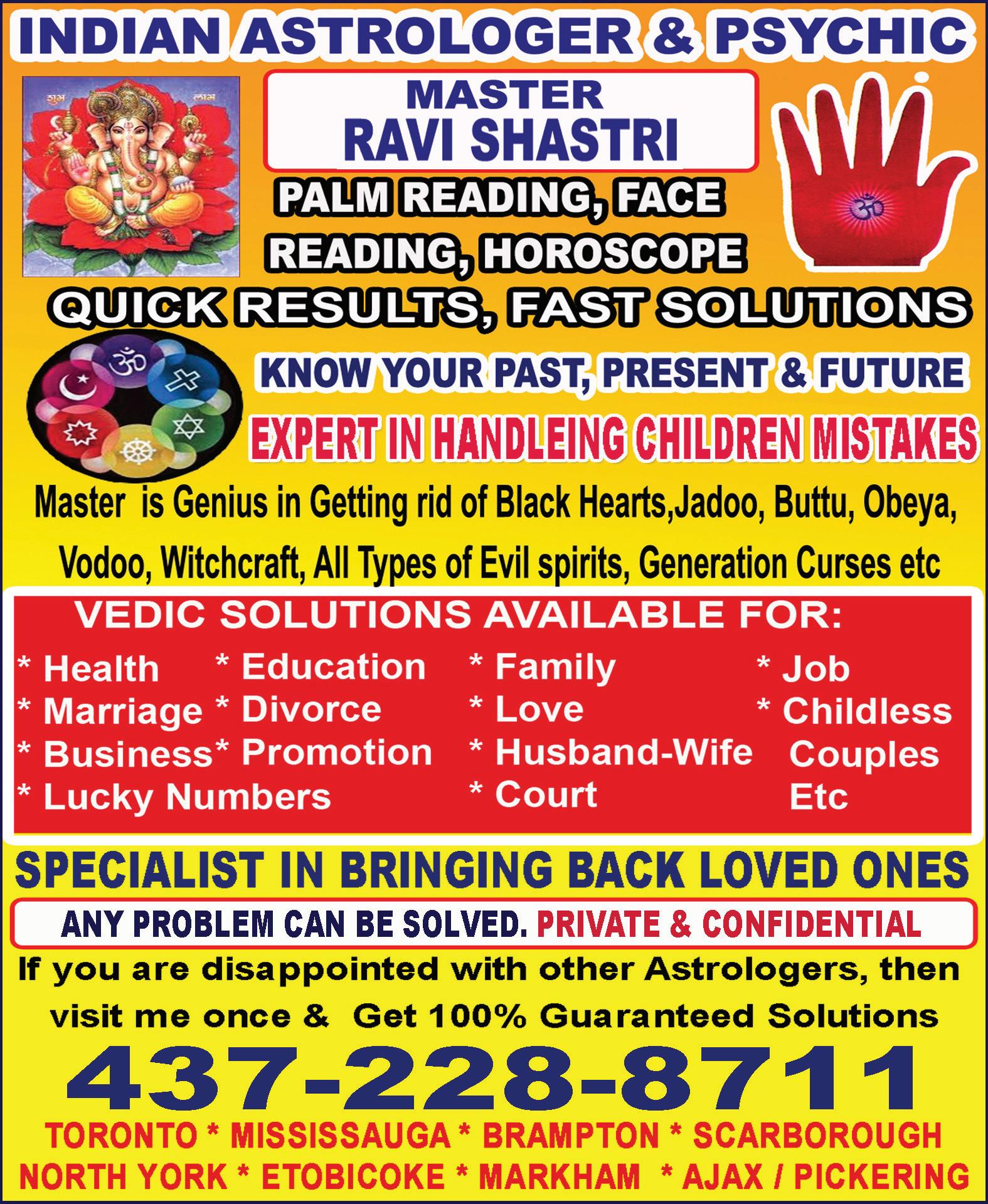









“As a Jamaican Canadian journalist who has covered both natural disasters and political controversies across the Caribbean, I recognize the familiar patterns of crisis exploitation now unfolding in my homeland...”













“As a Jamaican Canadian journalist who has covered both natural disasters and political controversies across the Caribbean, I recognize the familiar patterns of crisis exploitation now unfolding in my homeland...”


Shelly-Ann Aqui Solomon stands as one of the Caribbean’s most dynamic entrepreneurs, a digital strategist, award-winning business coach, and bold Trinidadian woman shaping what global entrepreneurship looks like for the next generation. Her impact stretches across more than 30 countries, yet her story began in a small pharmacy and a church choir long before she launched her global footprint.
I want you to see how she built it, because her journey holds a blueprint for every Caribbean woman ready to rise.
As a teenager, Solomon worked as an assistant in a pharmacy. She prepared prescriptions and imagined a future as a pharmacist. That dream faded when she married young and stepped into a different kind of responsibility. Her husband launched an HR consultancy firm, and she became his logistics manager and administrative backbone. She supported his company while raising their daughter and juggling expectations that often made her feel like a visitor in her own life.
“I wanted more time with my daughter and more freedom to build something of my own. Surrounded by entrepreneurs, I began asking myself a simple question: What can I create?”
Growing up as a pastor’s daughter, she sang in church for years. People soon asked for voice lessons, and those requests planted the seed for her first venture. She opened PRVM Performing Arts Academy and stepped into entrepreneurship with little more than faith and a fierce need to serve.
For four years, her husband funded the business. Then one day, he stopped. The announcement stunned her at first, but it became the turning point that shaped who she is today. That moment pushed her to shift from dependent to independent. She understood that her business had to support itself, and she had to lead with
strength, not convenience.
With only $40, half of which she borrowed from him, she bought the stationery she needed to create handouts for her students. That small investment lit a fire in her. PRVM grew from a side hustle into a respected performing arts school that held award shows at major theatres. Those theatre rentals came with serious price tags, so she built a business model strong enough to carry the weight. She learned how to make money, manage money, and multiply money.
“People often think they need a long list of resources to start a business. I prove otherwise. In today’s digital world, you can launch with your phone, your story, and your willingness to speak. You can begin with what you have.”
Over time, students and community members asked her to help them build their own businesses. Many had never seen a Caribbean woman succeed at scale. When they entered her world, they observed not just her results but the systems, strategies, and stamina behind them. By 2012, she found herself coaching men and women unofficially: no company name, no grand announcement, just service.
“I’m naturally technical. I build frameworks, methods, and stepby-step pathways to growth. I reverseengineer success. When I couldn’t find solutions, I built them. By 2017, I started doing digital marketing for my academy. The campaigns worked so well that people paid me to teach them how to set up their businesses, pricing, packaging, and sales structures. The digital brand name stayed in the back of my mind until it finally became official.”
“I wanted to become the face of Caribbean women who excel, not just survive. I wanted Caribbean women to merge global practices with our own cultural brilliance and prove we belong anywhere excellence lives.”
Caribbean women face battles

others don’t. We break barriers while fighting stereotypes, and we carry culture, family, and history while building empires. Solomon knows the pressure. She also knows the possibility. “I push every woman I mentor to step forward with clarity, confidence, and courage, never shrinking to fit a room that needs her leadership.”
In 2025, her work was recognized with the Caribbean POSH Icon Women – Entrepreneur Excellence Award. “The announcement stunned me. I accepted it with gratitude and a full understanding of what it represented; acknowledgment for my efforts, and evidence that purpose leaves footprints.”
“I don’t chase spotlight moments. I chase impact. The award confirmed that the sacrifices, the late nights, the tough decisions, and the willingness to speak truth into women’s lives create measurable change. I show up because women deserve proof that Caribbean excellence stretches across oceans.”
“My competitive edge is my Caribbean identity. I break borders by showcasing possibilities from the Port of Spain to New York to London. I want women to see how far we can go and still remain rooted in where we come from. Every time I succeed, I open doors behind me so other women can walk through with power. This is a movement built on purpose, elevation, and possibility.”
Her mission is simple: bring value to women who uplift our communities. When we raise women, we raise families, industries, and nations. She encourages every woman to step into their future with what she already carries.
Anything you want to be, pursue it with what you have.





The quiet hum of Ottawa’s parliamentary halls belies the seismic shift that has occurred beneath Canada’s democratic surface. Behind closed doors, without the thunder of debate, or the light of public scrutiny, Canada has accepted amendments to the International Health Regulations that will fundamentally alter the landscape of public health governance in this country.
The air in the room where these decisions were made likely smelled of bureaucracy: paper, coffee, and the faint scent of power. The sound was probably just the clicking of keyboards and the occasional hushed conversation, not the passionate discourse our democracy deserves. This is how sovereignty erodes.
Let’s be clear about what has happened. Canada, along with 195 other countries, has agreed to amendments that strengthen the World Health Organization’s authority during public health emergencies. These amendments, coming into force on September 19th, 2025, now requires Canada to establish a national IHR authority with sweeping powers to coordinate health measures across all levels of


government. The taste of this decision is bitter for those who value parliamentary sovereignty; it was made without debate, without vote, without the messy but essential process of democratic deliberation. The problem extends beyond procedural concerns. These amendments touch the very core of our constitutional rights. They create a framework where, during a health emergency, measures could be implemented that limit our Charter freedoms: movement, privacy, bodily autonomy, all in the name of global health security. The texture of this issue is rough and complex, and there are discussions across Canada of legitimate public health needs and genuine concerns about overreach.
Our investigation reveals a pattern that should concern all Canadians. The integration of these amendments into the broader Agenda 2030 framework suggests a coordinated effort to centralize global governance under the guise of cooperation. The WHO’s enhanced role in defining emergencies and guiding responses creates a dynamic where international obligations could override domestic laws and rights.
What we are witnessing is not inherently malicious, or at least that is not how they are painting the picture. Global health cooperation is necessary in our interconnected world. The COVID-19 pandemic exposed strength in international coordination, costing lives and livelihoods. The method matters. The process matters. The protection of rights matters. When these elements are sidelined, even for

so-called noble purposes, we risk trading away the very foundations of our democracy.
This brings us to a crucial understanding: the tension between global cooperation and national sovereignty is not a zero-sum game. We can strengthen international health security while preserving democratic processes and constitutional rights. The two are not mutually exclusive, unless we allow them to be.
The common ground here is recognition that public health is indeed a global concern requiring coordinated action. Simultaneously, we must acknowledge that democratic governance and rights protection are non-negotiable elements of a just society.
Moving forward, Canada must take immediate steps to address this democratic deficit. Parliament must debate
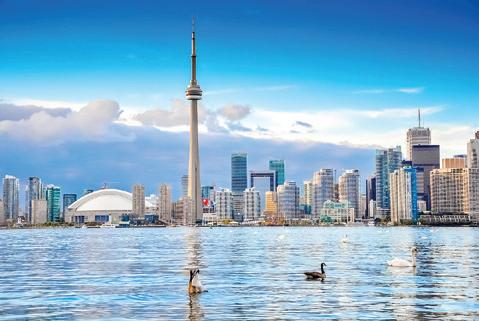
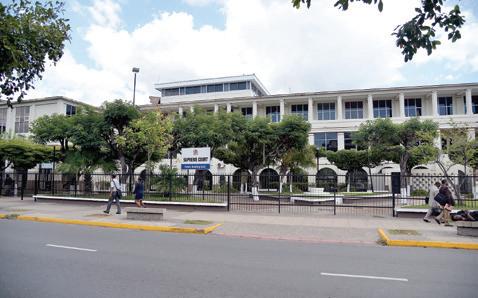
these amendments openly. Legislation must be introduced to ensure that any implementation of IHR requirements occurs within our constitutional framework. The proposed national IHR authority must be designed with robust oversight mechanisms and clear limitations on its powers.
The clock is ticking, but unlike most deadlines, this one carries the weight of our democratic future. We have been here before; watching as decisions are made behind our backs, as power shifts away from elected representatives toward unaccountable international bodies.
This time, we must demand better. We must insist that global health cooperation and democratic governance are not competing values, but complementary ones. The health of our democracy depends on it.





There are weeks when writing this message feels routine, and then there are weeks like this one—when every conversation, every headline, every quiet moment brings us right back home. Jamaica has been hit hard by a powerful hurricane, and while the winds may have stopped, the rebuilding has only just begun. Communities across St. Mary, Portland, St. Thomas, St. Ann, and even parts of Kingston and St. Andrew are facing damaged homes, uprooted crops, broken infrastructure, and a long road ahead.
But if there’s one thing the Caribbean teaches you from childhood, it’s this: storms come, but so does strength.
Here in Toronto, that strength is alive in every phone call from someone checking on family back home. It’s in the messages to friends asking, “You hear from your aunt yet?” It’s in the worry, the hope, and the relief when everyone is finally accounted for. Our diaspora carries the Caribbean inside us—through culture, through memory, and through a love that distance never weakens.
This week, many in our community have shared how heavy the emotional load feels. The cost of living in Toronto is already squeezing families, and now the responsibility of helping relatives back home adds another layer. It’s a pressure that’s real, but so is our commitment. Caribbean people have always mastered the art of stretching what little we have to help those who have even less.
And every day, you can see that generosity unfolding.
Caribbean churches are collecting hygiene products, baby supplies, and food for shipment. Local restaurants are planning soup days and fundraising meals. Community groups are organizing barrels. Strangers are sending $20 or $50 through WhatsApp to help a family they’ve never met. All of it speaks to who we are: a people who don’t wait to be asked—we just show up.
In that spirit, I want to shine a light on something deeply meaningful that our community is leading: the “Shirt Off My Back” campaign. Not many initiatives are born out of pure emotion the way this one was. It began with a phone call—a mother’s trembling voice describing the destruction in Jamaica, the fear, the loss, the destabilizing feeling of seeing your homeland battered. That call was the spark.
From that moment, something beautiful took shape.
“Shirt Off My Back” is a collaboration between Chef and Artist Roger Mooking, Olympian Donovan Bailey, and a number of
community-driven partners including Toronto Caribbean Newspaper, Toronto Pearson International Airport, HMS Host, Steer2Home, Brothers Who Care, Hear 2 Help, Twist by Roger Mooking, and Rocklands Market. Together, they have committed themselves to support Jamaica long after the online attention fades.
Because we know the truth: Compassion peaks during the headlines, but healing begins after the world moves on.
This initiative focuses on restoring dignity, stability, and comfort through quality clothing, linens, feminine hygiene products, non-perishable food, and bottled water. The campaign recognizes something simple but powerful: before anyone can rebuild, they need to feel human again. They need clothing that fits, bedding that’s clean, and the items that give them back a sense of normalcy.
Volunteers have already begun sorting donations, partners have opened their spaces, and shipments are set to begin in early December. This isn’t a one-week initiative—it’s a six-month commitment to Jamaica’s longterm recovery. Every contribution is tracked, organized, and delivered directly into trusted hands on the ground. It’s transparent, organized, and built with love at every step.
Drop-Off Locations:
1. 1860 Jane St, Toronto Down the ramp through the purple and yellow door
Nov 9, 16, 30 — 12pm to 4pm
2. Rocklands Market, Berkeley, ON Nov 16 — 9am to 5pm
For information: simone@carib101.com 416-312-9277
These are the moments that define us—not the storm itself, but how we rise in its aftermath.
As a community here in the GTA, we share more than culture. We share responsibility. We share heart. And we share the belief that even when the world is tired of caring, we will continue to care anyway.
So this week, let us stand with Jamaica not only in grief but in action. Let us give what we can, support how we’re able, and remind our brothers and sisters back home that they are not alone. One shirt. One meal. One gesture of love at a time.
Because the storm may pass—but our love stays. And as long as we keep moving together, Jamaica will rise again.








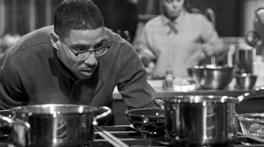









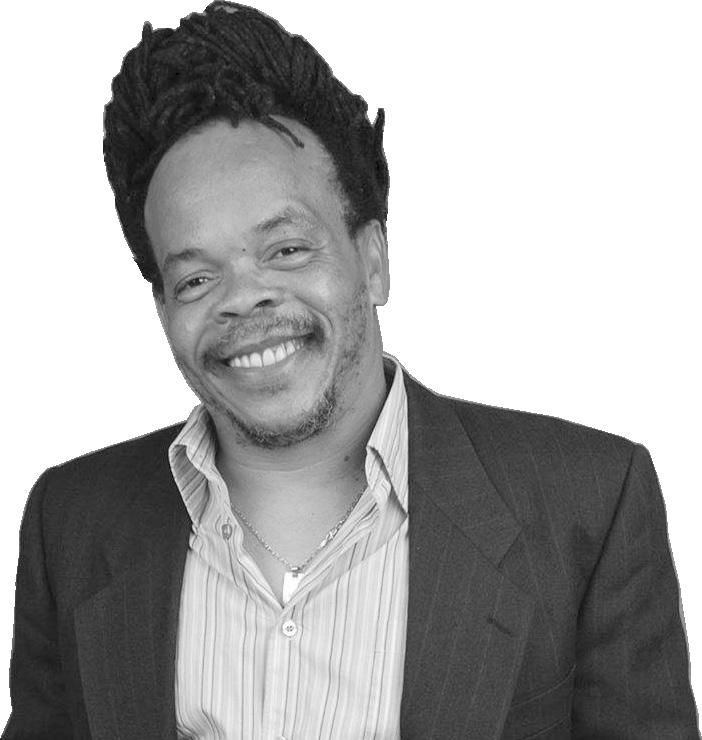
MICHAEL THOMAS
michael@carib101.com
TC REPORTER
The Democratic Republic of Congo has been subjected to centuries of international intervention by European powers, as well as its African neighbours.
With one million Congolese seeking refuge abroad and twenty-one million people in the country in need of urgent medical, food, and other aid, the DRC represents one of the largest and deadliest humanitarian crises in the world.
For many decades, Congo has been a “sweet spot” for colonizers as well as other neighboring warmongers seeking to control its territory and valuable natural resources. While its citizens suffer and are scattered worldwide, its resources are being robbed and shipped to foreign lands to make others comfortable.
Case in point; Apple’s CEO Tim

simone@carib101.com
TC REPORTER
Cook plans to follow through with its pledge to invest $600 billion in domestic manufacturing in the US, no one is talking about where the valuable components of Apple’s products come from.
According to award-winning Congolese spoken word poet Melodie Ntumba,”The minerals that power Apple’s iPhone, iPad, and MacBooks all comes from Congo, yet Apple has never built a school or a park in Congo to say thank you to the children, nor support the children who work 12 plus hours in the mine pits digging for these minerals which Apple relies heavily on. Apple has never set up a scholarship, nor even provided proper PPE for these Congolese children.”
Professor PLO Lumumba once said, “There are countries which are former colonizers whose subterranean hands are ever present, because an unstable Congo and an unstable Africa is a good hunting ground.”
The suffering of the Congolese people is well documented from the time of Belgium’s King Leopold, who amputated their limbs in the process of looting the country’s rubber and ivory, which led to over 10 million deaths. Imagine having your fingers chopped off or your entire
arm just because you did not meet the quota of rubber that a colonizer wanted from your country. Fast forward to today, and the motive is the same, the same, control, kill, and steal.
The more I investigated the convenient forgetfulness of the Western world when it comes to the plight of Congo is the more I am motivated to ask these questions from the Congolese poet named “Melodie Ntumba.” Please help in asking the outside world these simple questions. Where is your outrage for Congo?
“Over 8 million displaced, 24 million staved, six million battling severe malnutrition over seven million dead. Where is the attention for the millions of lives affected in Congo? Where is the support for children dying every day from malnutrition?
Where is the march for the women and girls getting sexually assaulted every single day? Where are the songs, the chants for the little boys whose childhoods are stolen so that they could serve as child soldiers?
Where is the outrage? The rallies? The march? The chants? The songs? The fundraisers? Your silence is deafening. Your silence is loud. Your silence is selec-
tive. Your advocacy is behind the paywall. Did you know that one in every five kids in Congo will pass away before their fifth birthday? Are you aware that women are being force-fed human flesh? Are you aware that little girls become mothers before they are sweet 16? Are you aware that Congo has been nicknamed the rape capital of the world? Where is our outrage? Where is your anger? What did the children of Congo do to deserve the cold shoulder?
What crimes against humanity did they commit to deserve this treatment? What crime have they committed to deserve this silent treatment?
Where are the protests to stand with Congo, the moment of silence, or the blackout? Haven’t we suffered enough? How many more before you consider us humans? How many more before you stand with us? Where is the outrage? Your outrage is selective. Your advocacy is behind the paywall. You only react when you see blood. Haven’t you seen enough? Are you serious? Where is your outrage? Where are the protests, the chants, the songs, the fundraisers for Congo? Where are they?”
voice resonating with authenticity. “For me growing up, I never had someone on me every day to be positive to be a good student, but I always wanted to do better.”
The distant drumbeat grew louder as guests entered the Toronto Grand Convention Centre that November evening in 2025. The rich, melodic ringing of steel pans (Antigua and Barbuda’s signature sound) filled the air, setting the rhythm for what would be an unforgettable 44th Antigua and Barbuda Independence Gala. At the heart of this cultural celebration stood Khan Cordice, the island nation’s scion of steel pan, whose journey from humble beginnings to international acclaim embodies the transformative power of music.
“I come from very humble beginnings,” Khan Cordice shared with me, his
Khan Cordice’s relationship with music began almost accidentally. Growing up in Antigua and Barbuda, Cordice didn’t initially have much interest in music. It was mostly a coincidence that saw him accompany a friend to his school’s steelpan yard after school. That serendipitous moment would change the trajectory of his life.
“I spent a lifetime worth of hours at a steelpan yard learning,” he reflected. “There was no time to get in trouble. I had a lot of fairy godmothers.” The sweet, percussive memories of those afternoons; sun-warmed metal beneath his fingers, the collective breath of musicians counting beats, the electric energy of creation. This became the foundation of his extraordinary career.
By 19, Khan had become the youngest arranger ever to win Antigua and Barbuda’s national steel pan com -
petition, Panorama. His Hell’s Gate Steel Orchestra would go on to claim 11 more victories, setting a national record with consecutive wins in 2024 and 2025. Earlier this year, he added Trinidad and Tobago’s 2025 Panorama title to his accolades with the Republic Bank Exodus steel orchestra.
Yet, Khan’s vision extends beyond trophies. “One day I remember coming out of the pan yard, and I found out that my friend got shot,” he recalled, the weight of the moment palpable. “My first thought was, what if I had been there? I am grateful for my life with pan.”
This gratitude fuels his mission to preserve and expand steel pan’s influence. “There are two main things that identify the Caribbean: Steel Pan, and Reggae music,” Khan asserted. His goal is to use steel pan as a vehicle to connect the Caribbean to the world, with China being his next target. “They already seem interested in steel pan. I would be able to form some great connections there.”
As Antigua and Barbuda’s Director of Culture, Khan is tackling the chal-
lenges facing the instrument’s future. “There is a major conversation happening around Steel pan in the Caribbean,” he explained. “Establish new school programs. Find creative ways to support education and art programs. There needs to be an injection, not necessarily money, but musical items.”
His latest initiative, a National Junior Solo Competition, aims to inspire the next generation. “We have gotten some support; people see my vision,” Khan said. “There are some naysayers, but I understand what it has done for me. I really want to reach areas that do not have access to music programs; I want to reach them.”
Speaking with Khan Cordice was a great reminder that culture, like music, thrives when nurtured by dedicated hands. Cordice’s journey from those first accidental notes at the steelpan yard to representing his nation on the world stage offers a powerful testament to finding one’s purpose and, in doing so, uplifting an entire community.



simone@carib101.com
TC REPORTER
Money in politics has always been about more than dollars, and now we are starting to see that it is about narrative control. Who decides what counts as “investment,” and what counts as “debt”? Under Canada’s political financing regime, the Canada Elections Act was designed to ensure transparency and fairness, but transparency does not always mean clarity. Sometimes, it reveals new layers of fog.
Every year, political entities, from federal parties to third-party advertisers, must report what they spend and where it comes from. Corporations and unions have been barred from contributing since 2007, ensuring that individual citizens remain the backbone of political funding. “Only individuals who are Canadian citizens or residents can make political donations,” according to Elections Canada. Yet, while contribution limits keep donors accountable, the real challenge lies not in who gives, but in how governments classify what they do with what’s given.
In 2025, a flashpoint emerged. The Carney government’s budget introduced a subtle yet seismic accounting move; shifting billions of dollars in day-to-day operational spending into the “capital” budget. On paper, this reclassification would make the government look like a responsible fis-
cal steward. In practice, it disguises the true scale of operational deficits.
“The PBO is sounding the alarm on this government’s accounting practices,” warns Gabriel Giguère, senior policy analyst at the MEI. “Jamming billions of dollars in day-to-day spending into the ‘capital’ column to make the government look like a responsible fiscal steward is really playing fast and loose with the facts.”
The Parliamentary Budget Officer (PBO) found that using traditional definitions of capital formation, spending should total roughly $217.3 billion, not the $311.5 billion reported by Ottawa, a difference of $94 billion. The government’s claim to reach an operational surplus by 2028 stands on this shaky redefinition.
When political language blurs into marketing, accountability turns into illusion management. Cognitive research on information gaps suggests that when the truth feels incomplete, the brain fills in details to resolve discomfort. Voters do the same. When told there’s a “surplus,” few stop to ask what kind.
In its current form, the budget’s language functions like emotional framing; it creates a sense of progress while withholding full clarity. This mirrors a psychological phenomenon: when uncertainty rises, people cling to authority for reassurance. In politics, that authority often dresses itself as fiscal prudence.
Ottawa defines tax credits, subsidies, and even corporate welfare as “capital investments.” Yet, tax revenue from those same corporations is treated as operational. The contradiction, though quiet, is revealing. It shows how governments rewrite narratives to maintain emotional equilibrium with the public. “This isn’t just a continuation of the previous government’s high-
spending habits,” Giguère adds, “It’s worse, because now they’re trying to obscure the truth.”
Canada’s political financing laws restrict foreign influence and corporate money for good reason; to ensure that political power reflects the will of citizens, not shadow actors. As the PBO and analysts underscore, fiscal truthfulness is its own form of political contribution. When definitions shift, public confidence erodes.
Fitch Ratings recently warned that rising debt and reclassified spending “Weakened Canada’s credit profile.” What’s at stake here is democratic credibility. A government that blurs fiscal boundaries risks blurring moral ones too.
The paradox is painful: a system built to ensure fairness and transparency can be repurposed to mask imbalance. This pattern is familiar. History shows that the most significant deceptions arrive as adjustments, as terms redefined just enough to escape scrutiny.
At the heart of this issue lies a deeper human question: what does accountability feel like? It’s the quiet sense that someone is telling the truth, even when it’s hard to hear. That is the currency of civic trust, and it spends fast when governments craft illusions instead of explanations.
When democracy loses the texture of honesty, every fiscal report becomes a potential act of propaganda. Canadians must re-engage with the process, read the footnotes as carefully as the headlines, and insist that transparency mean what it says. The PBO’s report, like a mirror held up to the nation’s ledger, calls for reflection. In the fog of fiscal storytelling, accountability is about narrative truth.

paul@carib101.com
TC REPORTER
Parents of Black Children (PoBC) didn’t hesitate when the Ontario Human Rights Commission released Dreams Delayed in early 2025. The organization said the report confirmed what Black families already lived and felt every day: anti-Black racism saturates Ontario’s education system and strips students of safety, dignity, and opportunity. PoBC welcomed the report’s urgency but stressed that acknowledgement means little without action.
PoBC’s message stayed sharp and uncompromising. Dreams Delayed marks a beginning, not a fix. More than six months passed since the release, yet the Ministry of Education produced no plan, no timeline, and no commitment to act. The ministry’s silence as a choice; silence that rejects accountability and reinforces harm.
When PoBC responded to the report’s 29 recommendations, it grounded its position in lived experience, years of advocacy, and a long record of community consultation. The organization pushed for five essential demands that shape any real reform:
Accountability: Education duty-holders must make clear, public commitments supported by timelines, transparent reporting, and independent oversight. Equity statements without action have no place in a system that continues to harm Black students.
Data transparency: The Ministry must enforce standardized, disaggregated race-based data collection and reporting that exposes systemic barriers instead of hiding them.
Representation: Schools need Black educators and leaders at every level. Recruitment, retention, and advancement require clear targets and fair hiring practices backed by measurable accountability.
Community voice: Black students, families, and Black-led organizations deserve to be centered in every decision. Policies and frameworks must be co-created with the community, not delivered top-down.
Policy reform: The Ontario Human Rights Code, Anti-Racism Act, and education policy memoranda must guide governance across the system to guarantee enforceable protections for Black students.
On September 30th, 2025, PoBC’s CEO and Chief Advocacy Officer Charline Grant emailed partners to request support for the organization’s upcoming public response. Grant outlined three direct asks that build a united front for change:
Amplify the response: Share PoBC’s message across your networks to strengthen visibility and public pressure.
Advocate together: Push for accountability, transparency, and decisive action from the Ministry and all responsible education bodies.
Stand publicly with PoBC: Show Black students and families they’re backed by a community that refuses to leave them isolated in this fight.
PoBC reinforced its call to action in the clearest terms. It urged partners to help press the Ministry to convene dutyholders and define what full compliance with the OHRC recommendations requires. After reviewing the executive summary and letter, PoBC asked each partner to confirm whether they’ll support a collective campaign for accountability and systemic change. The organization stressed that transformation takes courage, unity, and persistence, and communities can only win this together.
PoBC now prepares for its Annual General Meeting and the community launch of the Sankofa Framework for Dismantling Anti-Racism in Ontario on November 25th, 2025, at the North York Memorial Community Hall. At that gathering, PoBC plans to deliver expanded analysis and more detailed recommendations responding to Dreams Delayed. The event will signal the next phase of organized pressure, community leadership, and unwavering advocacy for Black students across the province.

simone@carib101.com
Nearly three weeks after Hurricane Melissa ravaged Jamaica’s coastline, the physical debris has begun to clear, but a more insidious wreckage has emerged; one of trust, transparency, and political integrity. As a Jamaican Canadian journalist who has covered both natural disasters and political controversies across the Caribbean, I recognize the familiar patterns of crisis exploitation now unfolding in my homeland.
Problem: The allegations that shook the nation
The sound of Buju Banton’s voice echoed across social media platforms, his normally melodic tone sharp with frustration. The Grammy-winning reggae artist spoke of barrels and pallets of relief supplies (stoves, generators, tarps, and food) that had been organized for hurricane victims. In his social media post, he gestured angrily as he described the scene at Norman Manley International Airport.
“These seals were broken,” he said, his voice thick with emotion. “Items were taken. This is not a PNP or JLP issue. This is about Jamaicans suffering while those meant to help them line their pockets.”
Hearing about those violated containers, meant to shelter and feed the vulnerable, became a visceral symbol of something many Jamaicans had long suspected.
Within hours, Transport Minister Daryl Vaz responded, his polished appearance contrasting sharply with the chaos still gripping parts of the island. Standing behind a government podium, his voice carried the practiced cadence of a politician accustomed to defending his administration.
“A full investigation involving cameras and customs officers found no evidence of missing or tampered goods,” Vaz stated, his fingers interlaced with practiced calm. “The shipment was offloaded directly from the plane to receiving trucks without delay. All seals were intact.”
The taste of political tension
hung thick in the air as these conflicting narratives played out across television screens, social media, and radio waves. For ordinary Jamaicans still sorting through waterlogged belongings and sleeping in temporary shelters, the back-and-forth between a beloved cultural icon and a government minister represented yet another blow to their faith in systems meant to protect them.
Investigation: Uncovering systemic issues
My investigation began with the clacking of keyboard keys and the shuffling of documents (both digital and physical) as I reached out to customs officials, airport workers, and humanitarian organizations operating on the ground.
What emerged was a complex story of international generosity potentially undermined by local corruption. Jamaica had received hundreds of cargo flights carrying aid from across the globe. Bulgaria’s 450 generators arrived with much fanfare, their metallic surfaces gleaming under airport lights. El Salvador sent rebuilding experts, their work boots hitting Jamaican soil with purpose. Canada contributed over $11 million in humanitarian assistance, while organizations like the Salvation Army and Afya Foundation dispatched pallets of lifesaving supplies.
Yet, despite this influx, the distribution remained frustratingly slow for many communities. The sound of generators running in some neighborhoods contrasted sharply with the silence in others where power had yet to return. The sight of relief supplies piled in government warehouses while residents went without created a bitter taste of injustice.
“We followed every protocol,” one customs official told me, speaking on condition of anonymity. The weight of their words seemed physically present in the room. “But there are gaps in the system that people with the right connections can exploit.”
Meanwhile, the Jamaica Integrity Commission issued a statement urging the public to report any corruption related to hurricane relief. The Commission’s commitment to monitoring aid distribution felt like a small, but necessary step toward accountability.
Understanding: THE human cost of corruption I have spoken to individuals who have walked through the affected communities, and they have shared with me that the human impact became tangible. The
crunch of broken glass underfoot, the sight of families sharing limited resources, the sound of children asking when they would return to school, these sensory details painted a picture far more complex than political soundbites could capture.
In New Kingston, where plans for a $5 billion smart city development funded by U.S. interests were being discussed, the contrast between future promises and present suffering was particularly stark. The gleaming concept drawings for digitized urban spaces seemed almost surreal against the backdrop of immediate need. Meanwhile, this has been happening quietly for many years.
“The economic hurt from this hurricane is immense,” Sean Paul shared during an online interview, his voice carrying the weight of genuine concern. The dancehall superstar had pledged to match up to $50,000 in donations, joining other artists like: Spice, Vybz Kartel, and international figures like Pitbull in relief efforts.
Their contributions, while significant, raised questions about why government systems seemed so inadequate. The sight of Spice delivering truckloads of construction supplies through her foundation was inspiring, but also highlighted the gaps in official response.
Despite the divisions, common ground exists in the shared desire to see Jamaica recover stronger and more resilient. Now, I want to be clear that there is a connection between Hurricane Melissa’s recovery and Jamaica’s Vision 2030 development plan, which reportedly offers a framework for rebuilding that addresses immediate needs while advancing long-term goals.
The concept of “15-minute cities,” urban areas where residents can access daily necessities within a short walk or bike ride, takes on new meaning. They say that the digitization of services could streamline future disaster response if implemented with transparency and accountability.
Developing compact, amenityrich 15-minute cities often involves significant urban redevelopment. In Jamaica’s western regions heavily damaged by Hurricane Melissa, this could lead to the displacement of low-income communities if redevelopment prioritizes upscale housing, or commercial projects. Without strong safeguards, existing residents may be priced out or forced to relocate from their historic neighbourhoods.
While the goal of creating resilient, accessible urban spaces aligns with sustainable development, negative impacts could arise if 15-minute city initiatives fail to account for the socio-economic realities of Jamaica’s diverse communities. The most severely damaged western areas require careful, inclusive planning that prevents displacement, ensures equitable infrastructure investment, respects community identities, and prioritizes urgent recovery needs.
The path forward requires acknowledging the painful reality of corruption while refusing to let it define Jamaica’s recovery. The Jamaica Integrity Commission’s call for reporting corruption must be met with robust protections for whistleblowers and genuine consequences for those found guilty of diverting aid.
International donors must balance generosity with vigilance, ensuring their contributions reach intended recipients. The Canadian government’s $11 million in humanitarian assistance, for instance, should come with mechanisms for tracking distribution and measuring impact.
For Jamaicans at home and abroad, this moment represents both a challenge and an opportunity. The diaspora’s engagement can transcend charity to become an active partner in shaping a more transparent, resilient Jamaica. Supporting credible organizations, demanding accountability from officials, and investing in sustainable development projects can help rebuild trust.
Hurricane Melissa exposed vulnerabilities in Jamaica’s disaster response and political systems, but it also revealed the strength of community solidarity and international support.
The question now is whether this crisis will become another chapter in Jamaica’s long history of corruption allegations, or a turning point toward greater transparency and accountability. The answer lies in the daily choices of ordinary Jamaicans, government officials, and international partners, all of whom must decide whether to perpetuate broken systems or work together to build something better.
In the end, the true measure of recovery will not be in the number of generators delivered, or houses rebuilt, but in whether Jamaicans can once again trust that when disaster strikes, the systems meant to protect them will hold firm.


simone@carib101.com
TC REPORTER
The scent of sorrel simmering on the stove, the rhythm of soca music drifting through the apartment, the weight of exhaustion after a 10-hour shift; this is the reality for many Caribbean mothers in Toronto. You are working tirelessly to provide for your children, yet often left wondering if you are truly connecting with them. The problem isn’t love; it’s time and energy.
After speaking with dozens of mothers in our community, I’ve discovered something profound: quality connection doesn’t require hours of uninterrupted time. What our children crave most is our focused presence, even in brief moments. The investigation revealed that small, intentional interactions, infused with our rich cultural heritage, creates stronger bonds than occasional elaborate outings.
“When my daughter and I spend just ten minutes talking about her day while preparing dinner together, I see her light up in ways that hours of screen time never achieve,” shares Marcia Thompson, a single mother of two from Scarborough. “These small moments have become our anchor.”
Understanding this dynamic opens possibilities for busy parents. The common ground we all share is the desire to raise children who are grounded in their Caribbean identity while thriving in Canadian society. The forward movement lies in weaving cultural connection into everyday interactions. To help families make the most of this time, a representative from Tutor Doctor shared with me five fun, hands-on, and screen-free activities designed to keep kids learning, creating, and ready for the year ahead.
1. DIY winter craft projects: Sparking creativity through art
Ideas to try:
• Build a winter village with paper, cotton balls, and glitter.
• Create holiday cards or decorations using eco-friendly materials.
• Design your own snowflakes or gingerbread houses from craft supplies.
Why it matters: Creativity strengthens problem-solving and self-expression.
2. Holiday reading challenge: Keeping minds sharp
Tip: Try a family reading challenge or a reading bingo sheet with fun tasks like reading outside, finishing a graphic novel, or reading to a family member.
3. Winter science experiments: Hands-on learning
Ideas to try:
• Freeze objects in ice and predict which will melt first.
• Make a DIY snowstorm with simple household items.
• Create a DIY lava lamp.
Why it matters: Builds curiosity, observation, and experimentation skills.
4. Winter nature walks & scavenger hunts: Explore the outdoors
Tip: Turn walks into scavenger hunts—spot animal tracks, different trees, or unique winter birds.
5. Set New Year’s goals: Focus on growth and reflection
Tip: Make goal-setting fun with a vision board or a goal-tracking infographic. We also wanted to contribute 5 culturally focused activities that will create meaningful moments with your children, even on your busiest days:
• Storytelling while cooking: While preparing meals, share stories from your childhood, or Caribbean folklore. The sizzle of oil in the pan, the aroma of spices, and the rhythmic sound of chopping
become the backdrop for passing down traditions. Ask your children to add their own twists to these stories, building intergenerational bridges.
• Music and movement: Put on a reggae or calypso song and dance together for just five minutes. The physical release benefits both you and your child, while the music connects them to their heritage. Research shows that movement to music improves mood and strengthens relationships.
• Gratitude practice: At bedtime or before meals, take three minutes to share what you’re grateful for. This simple practice, rooted in Caribbean resilience, teaches children emotional intelligence and creates space for meaningful conversation.
• Cultural word of the day: Introduce a word or phrase from your heritage language each day. Use it in conversation and encourage your children to do the same. The sound of these words rolling off young tongues preserves our linguistic legacy.
• Mindful moments: When stress mounts, take two minutes for deep breathing together. Show your children how to center themselves, a valuable life skill that connects to traditional Caribbean practices of patience and perseverance.
The key is consistency over quantity. These small interactions accumulate over time, creating a strong foundation of trust and cultural identity. What I have learned through this investigation is that connection thrives in intentionality. As Caribbean parents navigating the challenges of raising children, we carry the responsibility of passing down our heritage. The most powerful gift we can offer our children is the knowledge that they are: seen, heard, and rooted in a legacy of resilience and joy. In just fifteen minutes a day, we can ensure that legacy continues to thrive, right here in Toronto. I want to thank Becky Ward, Education Experience Specialist at Tutor Doctor, for sharing their research and activities with us, and reminding us that with the right activities, children can keep their minds sharp, build essential skills, and enjoy meaningful experiences that will set them up for success in their lives.
Canada has quietly introduced cloned meat to feed its citizens, and most don’t even know

MICHAEL THOMAS
michael@carib101.com
TC REPORTER
No, you are not making visual mistakes here and there are no labels to distinguish naturally farmed meat from cloned meat at your favorite Canadian supermarket. So, unless you have a trusted butcher, or hunt your own meat, you are on your own. Why?
According to documents published by Health Canada and the Canadian Food Inspection Agency (CFIA), the planned update to the Novel Foods framework will exclude cloned animals from the definition of “novel foods.”
This means there will be no label and therefore shoppers will not know nor have any choice as to what meat they are consuming, nor its origins. Health Canada plans to roll out this change in 2026, after meat from cloned animals and their offspring will no longer be classified as ‘novel foods.’
Meanwhile, Health Canada claims that cloned meat is indistinguishable from conventional meat and safe for human con -
sumption.
“Consumers have the right to decide for themselves,” says Vincent Breton, duBreton CEO. “The government quietly changes the definition of a novel food, which means that unless it’s labeled organic, there is no way to distinguish brands that support animal cloning from brands that don’t. People want and deserve to know that.” says Breton.
Breton, a major certified humane and organic pork producer, is calling on responsible food brands to lead by example and adapt variable labeling protocols by giving consumers a clear choice to retain trust in Canadian food.
DuBreton also urges its supply chain partners to join them in being transparent about animal cloning and gene-edited production and help make responsibly raised pork accessible to all.
Cloned animals are made through assisted reproductive processes such as artificial insemination. That clone is then bred through normal reproduction, and its offspring eventually enter the food chain as meat, without shoppers having any idea what they are eating.
This is not just a Canadian problem, but an American one too. Here is why. The FDA has approved meat and milk from cloned cattle, swine, and goats, along with their offspring, since January 2008.
Almost two decades later, Americans are only now realizing that cloned meat has been part of the food supply since then.
Some Americans argued that if cloned meat is allowed, it must at least be labeled with its origin and how it was produced. Others are claiming they have unknowingly purchased cloned products and say the FDA has failed US consumers.
Some find the idea of clone meat repulsive, citing animal welfare, food safety, and ethical and religious objections. Others cite concerns over ethics, general unease with technology, and fears that this could lead to human cloning.
In Europe, cloned meat is not allowed for food production due to a ban on the cloning of farm animals and the sale of products derived from them. However, the FDA concluded that these foods are not materially different from traditional meat and dairy, and therefore, no special labeling is needed, which is the same reasoning Health Canada has given.
“It is a big step forward that has made impossible to possible,” said Falong Lu, an investigator at the State Key Laboratory of Molecular Developmental Biology, Remember the first cloned sheep named Dolly in 1996? Well, China just became the first country to successfully clone Tibetan goats using the same process.
The next time you are in a meateating mood, be it for cooking or barbecue, it would be prudent to ask many questions before embarking on acquiring meat whose origins you are not sure of. As someone once said, this is a serious case of buyer beware.


PAUL JUNOR
paul@carib101.com
TC REPORTER
The fourth annual Youth Participatory Action Research (YPAR) Conference, hosted by the Toronto District School Board’s Centre of Excellence for Black Student Achievement (CEBSA), delivered a powerful showcase of Black youth leadership. Held on Saturday, November 1st, 2025, at Highland Hall on the University of Toronto’s Scarborough campus, the event brought together students, educators, administrators, and community partners. Their shared goal: elevate student-led research and highlight the issues that matter most to Black learners.
The conference grew out of the Black Student Summer Leadership Program (BSSLP), a creative initiative shaped by CEBSA. The program began with ten students in 2019 in partnership with the

simone@carib101.com
TC REPORTER
I remember sitting in my grandmother’s kitchen as a child, watching her hands move rhythmically as she kneaded dough. The scent of cinnamon and nutmeg filled the air, and I would marvel at how slowly the afternoon seemed to stretch before us. “Just wait,” she would say with a knowing smile,
Jean Augustine Chair in Education, Community, and Diaspora at York University’s Faculty of Education. Participation expanded to 30 students in 2020 and surged to 100 by 2025. This growth turned the program into a competitive, in-demand experience for students eager to lead, research, and influence their schools. BSSLP affirms Black identity, excellence, and leadership, while modeling how schools and communities can work together to expand access, create career pathways, and drive systems change.
Students’ presentations at the conference stemmed from their work in YPAR. This approach empowers young people to study issues shaping their schools and communities. Through YPAR, students define problems, conduct research, and propose solutions with guidance from educators, mentors, and community partners. The model strengthens leadership, activism, critical thinking, public speaking, collaboration, and community engagement. It also builds momentum toward equity and justice, giving Black students the skills and confidence to influence change.
In her message to participants, Dr. Tanitia Munroe wrote, “This is more than a conference. Fostering Black student
well-being and achievement requires real partnerships among schools, families, and communities.” She emphasized that when institutions invest in youth leadership, “The future we imagine begins to take shape in the present.”
Centrally assigned principal Thando Hyman also grounded the day in community values. “It takes a village to raise and support a Black child,” she shared. She encouraged attendees to listen with intention and carry forward the insights from student researchers who are “Stepping boldly into leadership and shaping futures filled with possibility.”
The commitment to student voice echoed throughout the day. Audley Salmon, Associate Director of Learning Transformation and Equity at the TDSB, stated that the conference reflects the “Brilliance, leadership, and determination of Black students.” He praised students for identifying challenges in their schools and leading the design of practical, community-strengthening solutions. Their research showed why educational transformation must rely on student experience, not institutional assumptions.
Director of Education Clayton La Touche reinforced this sentiment. He not-
Why does time fly faster as we
searchers may be closer to understanding why our perception of time shifts throughout our lives.
In a fascinating study published in Communications Biology, scientists analyzed brain scans from 577 people aged 18 to 88 as they watched the same eightminute clip from “Alfred Hitchcock Presents.” The episode, titled “Bang! You’re Dead,” was specifically chosen, because it creates consistent patterns of brain activity across viewers, making it ideal for studying how our brains divide and track unfolding events.
What they discovered offers compelling insight into our relationship with time. The brains of older participants shifted to new activity states less frequently, and those brain states lasted longer compared to younger participants. This pattern was consistent across the entire age range.

This finding aligns with an idea dating back to Aristotle: the more notable events we experience in a given period, the longer that time subjectively feels. If older
adults’ brains are essentially logging fewer “events” in the same timeframe, this might explain why time seems to accelerate.
The researchers attribute this phenomenon to “age-related neural dedifferentiation,” a process where brain activity becomes less specific with age. In younger people, different brain regions respond selectively to specific categories of information. As we age, however, these neural responses become more generalized, potentially making it harder to recognize where one event ends and another begins.
Yet, this neurological explanation is only part of the story. As linguist Joanna Szadura points out, we experience time on two scales: society’s linear division into hours, days, and years, and our internal logarithmic scale. To a five-year-old, one year represents 20% of their life; to a fifty-year-old, it’s merely 2%. This mathematical reality shapes our perception in profound ways.
The implications of this research extend beyond mere curiosity. Understand-
ed that the conference demonstrates what education can achieve when students sit at the center of learning. Through their research, students addressed issues tied to identity, belonging, agency, and academic success. Their work made clear that education is about who students become. Presentations explored mental health, belonging, representation, safety, justice, mentorship, and the importance of centering Black girlhood. Students grounded their work in lived experience, cultural identity, and a collective vision for safer, more inclusive schools.
System Superintendent Karen Murray closed with gratitude for the student leaders who helped design the conference and for the presenters who shared their findings. She also recognized the Research Associates, educators, and mentors who supported students through a framework of self-determination, social justice, equity, and care. Their guidance ensured that students gained the tools to lead with confidence and purpose.
The 2025 YPAR Conference affirmed a clear message: when Black youth receive the platform, mentorship, and resources they deserve, they transform the systems around them.
ing how we perceive time can help us live more fully, especially as we age. As study co-author Linda Geerligs suggests, engaging in novel activities, learning new things, traveling, and fostering meaningful social connections can help make time feel more expansive.
In our community, where elders are revered for their wisdom, this research offers both scientific validation and practical guidance. It reminds us that while we cannot stop time’s passage, we can influence how we experience it, by filling our days with meaningful moments, new experiences, and genuine connections.
The next time you feel time slipping away too quickly, consider this invitation: step outside your routine, try something new, or simply linger a little longer in conversation with someone you care about. These moments, rich with novelty and meaning, might just help you reclaim time’s expansive quality, proving that while we can’t turn back the clock, we can certainly make the most of each tick.
We poison our water while leaders pretend nothing’s wrong
treat waterways like bottomless trash bins. When waste sinks out of sight, people behave as if it disappears. It never does. Plastics break into smaller pieces, yet they never vanish. They settle into lakebeds, drift across oceans, and drift through the air as burned waste. Humans breathe them, drink them, and swallow them daily. There’s no approved system capable of cleaning water on a mass scale, so communities consume the pollution left behind by decades of convenience culture and disposable goods.
Mercury sits at the top of this long list of threats. Industries still rely on it for products and processes, even though a large dose kills instantly. The danger today lies in the steady drip of exposure. Small particles settle into body fat and stay there. In countries where obesity rates run high, individuals store more mercury than their slimmer counterparts, placing them at greater risk of longterm toxic buildup. You’ve heard the advice: eat fish for your health, but larger fish, older waterfowl, and ocean predators carry the highest concentrations of mercury. The farther up
the food chain, the heavier the load of toxins. These poisons harm the nervous system, weaken immunity, and trigger chronic illness. Contaminated ecosystems create contaminated people.
Microplastics worsen the problem. They lodge inside organs, flow through bloodstreams, and disrupt hormones. Scientists now find them in human placentas, lung tissue, and arteries. Each discovery reveals a deeper level of exposure than previously understood. Our bodies didn’t evolve to handle plastic. Yet plastic now circulates inside us.
These rising toxin levels demand urgent action from governments. Instead, many deny the crisis, or dismiss it for political gain.
In the United States, the Trump Administration dismantles regulations meant to safeguard environmental health, granting corporations more freedom to extract, pollute, and profit. Canada faces its own contradictions: Alberta weakens environmental protections to cut costs, and Ontario pushes development in the Ring of Fire despite guaranteed water contamination for surrounding communities.
Across the world, economic expansion routinely outweighs environmental responsibility. India and China struggle with rivers so polluted that cleanup feels impossible. Factories discharge chemicals, heavy metals, and untreated waste while citizens shoulder the consequences. Corporate profit merges with governmental neglect, creating a toxic loop where short-term jobs overshadow long-term survival.
Global pollution didn’t emerge by accident. It grew from human choices, our appetite for convenience, our governments’ loyalty to industry, and our unwillingness to imagine life beyond economic growth. These decisions promise a bright future while quietly sacrificing public health.
The next generation inherits this mess. They drink the water we contaminated. They breathe the air we clouded. They eat the fish we poisoned.
The truth lands heavy: we created this crisis, yet we still hold the power to reverse it. But power means nothing without action.

simone@carib101.com
TC REPORTER
Toronto’s Caribbean community is showing up strong this season, and you are invited to every moment of the fun, food, and powerful community building! From pepperpot and plait bread to high-impact youth advocacy and uplifting cultural workshops, this month’s lineup is all about connection, celebration, and collective empowerment. Whether you’re craving a taste of home, ready to laugh until your belly hurts, or looking to pour back into the community through meaningful dialogue and action, there’s something here with your name on it.
Expect rich flavours, bold performances, brilliant young leaders, and artists honouring the legends who shaped our sound and spirit. The GTA is buzzing. Dive in, link up your crew, and step into the vibrant Caribbean heartbeat pulsing across the city this season. Let’s go!
Get ready for a taste of Guyana this Christmas!
Join us for the 4th Annual Pepperpot Fest at Emerald Banquet Hall (55 Guided Crt, Etobicoke) and indulge in our staple cuisine; pepperpot with plait bread and ginger beer!
Enjoy an unforgettable night of:
Top-notch entertainment by Emily Moore. Mala Haripersad and DJ Vick and De Trio Dance Crew with Emcee Mala Singh Friendly competition among talented cooks vying for the best prizes, judged by Chef Dev and Bombay Lemonade!
Plus, vendors offering a variety of delicious Guyanese food and plenty of
giveaways!
By attending, you’re supporting a great cause; providing backpacks and food hampers to children in Palestine, Canada and Guyana this season.
Event Details
When: Friday, December 5th
Time: 6 pm - 11 pm
Where: Emerald Banquet Hall, 55 Guided Crt, Etobicoke
Admission: $25
Etransfer to onelovetable@gmail.com
Events – One Love Pepperpot
Come out and let’s celebrate the flavors of Guyana together! See you there!
REST Centres presents Black Youth Housing Equity Summit
REST Centres in collaboration with the Network for Advancing Black Communities (NABC) is hosting the first-ever Black Youth Housing Equity Summit on November 20th–21st, 2025, at Algoma University’s Mississauga Campus.
This landmark event will bring together youth, service providers, funders, policymakers, and community leaders from across Ontario to confront the urgent crisis of Black youth homelessness.
What to expect:
• A Black-led and Black-focused space where youth speak openly about their experiences
• Opportunities to learn from Blackled organizations leading innovative housing solutions
• Candid discussions about policy shifts and funding models that reflect the realities of our communities
Homelessness affects many, but Black youth face unique challenges that are often overlooked. At REST, we remain committed to addressing these disparities head-on, ensuring that Black youth are not left behind in the fight for safe, stable, and dignified housing.
As a supporter of REST, you are part of this effort.
Join us to listen, learn, and take action alongside others who believe in a future where no young person has to wonder where they will sleep at night.
Seats are limited. Go online and visit Black Youth Housing Equity Summit (BYHES) 2025
Indo Caribbean Canadian Association presents Star Gyal Workshop
Speak boldly, stand proud, mek dem stop and listen!
Our final Star Gyal workshop for 2025 is on Sunday, November 23rd.
Join us for an exciting and interactive session designed to help learn and practice the art of delivering strong presentations that grab attention and leave a lasting impression!
Throughout this session, participants will explore fun and practical ways to build confidence, connect with their audience, and bring their words to life. Discover how to plan and prepare for any type of presentation while understanding the difference between presenting and leading a group activity; using storytelling and body language to bring your ideas to life and stay calm and focused in front of an audience.
For more information or to register, visit indocaribcdn.com/stargyal
Brampton on Stage: The Jay Martin Comedy Series: All-Star Edition November 23rd, 2025 | 7:00 PM
Stacked with unmatched talent, audiences can expect non-stop laughter from some of the funniest comedians from across the globe. Featuring Jay Martin, Keesha Brownie, Crystal Ferrier, Zabrina Douglas, Jean Paul, Big Norm, Keith Pedro, Kenny Robinson, Angela Thurston, and Nick Reynoldson.
Looking for a unique way to celebrate the season with friends, family, or coworkers? Book your group holiday outing at the theatre and save big! Laugh, cheer, and toast to the holidays; all under
one roof.
Group discounts available for 10+ tickets. Contact groupsales@brampton.ca to make it a night to remember.
Maurice Gordon: Tribute to Ernest Ranglin
November 23rd, 2025 | 2:00–4:00 p.m. | The Rex – Global Jazz Series
Jamaican Canadian guitarist and bandleader Maurice Gordon pays homage to one of his greatest musical inspirations — Ernest Ranglin, Jamaica’s legendary “Godfather of Reggae Guitar.”
Ranglin’s extraordinary career, spanning more than seven decades, redefined modern guitar playing through his masterful blend of jazz sophistication and the vibrant pulse of Jamaican Mento, Ska, Rocksteady, and Reggae. His pioneering sound helped shape the identity of Jamaica’s music and influenced generations of musicians around the world. This concert celebrates his timeless artistry, innovation, and enduring global impact.
Maurice Gordon (an acclaimed guitarist, composer, and educator) brings a deep and personal connection to this tribute. Having performed and recorded with icons such as: Jimmy Cliff, Monty Alexander, Joe Sealy, Salome Bey, Kingsley Ettienne, and many others, Gordon’s playing reflects the soulful fusion of jazz, reggae, and world music that Ranglin championed.
As a bandleader, Gordon fronts several acclaimed ensembles, including Pimento Groove (celebrating the music of Harry Belafonte and Miss Lou), Skafire Roots, and the TO Soul Jazz Collective. He is also a featured guitarist with Reggaddiction and was formerly musical director for Jay Douglas.
Join Maurice and his ensemble for an uplifting afternoon of rhythm, melody, and storytelling celebrating the genius of Ernest Ranglin, a true global music pioneer whose influence continues to inspire artists across generations and continents.

The Excellence Gala hosted by Citizens for the Advancement of Community Development (CACD) on Saturday, November 8th, 2025, at the Mississauga Convention Centre delivered an evening rooted in pride, culture, and community strength. Held under the United Nations’ International Decade for People of African Descent, the event embraced the theme Honouring Legacy, Celebrating Culture and Advancing Equity. Promotional materials promised an unforgettable evening of inspiration and unity, and the gala lived up to that promise.
The room filled early with community members, civic officials, school board leaders, partners, and advocates who work daily to improve life across the
Region of Peel. Their presence highlighted the broad support CACD continues to earn through years of direct service to children, youth, and families. The organization has become a vital force in Mississauga, especially in neighbourhoods where residents face structural barriers and limited access to opportunities.
CACD’s programming reflects its commitment to equity and empowerment. Its initiatives include after-school activities, leadership training, youth justice and crime prevention programs, health promotion, college and university internships, and targeted support for high-school students. Each program focuses on building skills, confidence, and resilience in young people who deserve consistent guidance and meaningful mentorship.
This year’s gala carried that same spirit of empowerment. Executive Director Ron Cunningham and a dedicated team of volunteers delivered a polished and creative experience from start to finish. The evening opened with a vibrant fashion showcase. Models walked with confidence as they displayed designs that
blended cultural heritage with contemporary style. Their presentations revealed artistry, innovation, and a deep appreciation for diasporic identity.
Speakers then introduced the award recipients with warmth and precision. They highlighted each honouree’s biography, contributions, and the impact of their work. The audience heard stories of leadership across education, law, business, philanthropy, and civic engagement. Each recipient represented a commitment to service that extended far beyond personal achievement.
Award Recipients:
• Distinguished Allyship Award — John Tory
• Trailblazer Award for Public Service and Representation — Greg Fergus
• Leadership in Education and Innovation — Dr. Gervan Fearon
• Lifetime Achievement and Public Service — Justice Pamela Appelt
• Distinguished Leadership and Philanthropy — Dr. Mary Anne Chambers
• Excellence in Civic Leadership and Community — Linden King
• Transformational Leadership and System Change — Sophia BrownRamsay
• Business Leadership and Community Empowerment — Anthony Contento
The presentation of these awards reminded the audience of the collective influence that Black leaders and allies have across Canada. Many recipients have shaped policy, expanded educational access, fueled civic participation, and strengthened community institutions. Their achievements reflect decades of service, perseverance, and dedication to building a more equitable society.
CACD’s work reinforces those values year after year. The organization continues to elevate issues that affect youth and families in Peel, bringing attention to equity, justice, mental health, and inclusive community development. Its consistent presence helps create a region where fairness, respect, and opportunity guide decision-making.
Residents who want to learn more about CACD’s programs or support its initiatives can visit cacdcanada.org.

simone@carib101.com
The sizzle of plant-based burgers in Canadian homes masks a quiet revolution in our food systems. Behind the marketing of sustainable, healthy alternatives lies a complex web of investments led by one of the world’s most influential figures: Bill Gates.
As we navigate increasingly crowded supermarket aisles filled with these products, questions emerge about what we’re truly consuming.
Beyond Meat and Impossible Foods, two Gates-backed companies, promise environmental benefits through their plant-based alternatives. Yet the laboratory-like precision of their manufacturing processes raises concerns. The me -
tallic aftertaste of an Impossible Burger comes from genetically engineered yeast producing heme iron, a substance absent from traditional plant foods. Meanwhile, the excessive sodium levels in these products create a lingering thirst that hints at their ultra-processed nature, despite their green packaging.
The crisp exterior of an Apeelcoated apple gleams unnaturally under fluorescent lights. This invisible coating, designed to extend shelf life and reduce food waste, enters our bodies with limited independent study on its long-term effects. What chemical interactions might occur within our digestive systems over years of consumption? The silence from regulatory bodies on these questions is deafening.
In dairy aisles across Canada, Savor’s fake butter products spread smoothly on toast, but the trans fats they contain have been linked to heart disease and dementia. The artificiality of these products contrasts sharply with the simple, wholesome image projected in their marketing materials.
Even more futuristic is Eat Just’s
lab-grown meat, developed in sterile bioreactors rather than farms. The sight of chicken cells multiplying in petri dishes represents a radical departure from traditional agriculture. While marketed as ethical and sustainable, the long-term health implications remain largely unknown, as does the wisdom of divorcing food production entirely from natural ecosystems.
Perhaps most concerning is Arkea Bio’s cattle vaccine, designed to reduce methane emissions by altering animals’ digestive processes. The image of technicians injecting cows with substances to modify their biology raises profound questions about our relationship with nature and the potential unintended consequences of such interventions.
These innovations align closely with the UN’s Agenda 2030 Sustainable Development Goals, which Bill Gates actively promotes through his foundation. The connection between these technological solutions and global sustainability objectives seems logical at first glance. However, the implementation reveals troubling power dynamics.
In rural communities worldwide, farmers report feeling pressured to adopt these technologies. Civil society organizations and farmer groups are increasingly pushing back, advocating for food sovereignty and agroecological approaches that respect traditional knowledge and biodiversity.
The tension between technological innovation and traditional food systems represents a battle for control over what enters our bodies and who makes those decisions. As these products populate Canadian shelves, we must remain vigilant consumers, questioning the broader implications of supporting a food system increasingly dominated by tech investments.
Our responsibility extends beyond personal health choices to the kind of food future we want to create. Will we embrace a vision of food as a technological product to be engineered and patented, or one that honours cultural traditions, ecological wisdom, and democratic control over what we eat? The answer will shape our communities for generations to come.

PAUL JUNOR
paul@carib101.com
TC REPORTER
Growing U.S. military activity across the Caribbean has increased anxiety throughout the region, especially after a surge in American forces near Trinidad and Tobago. The buildup follows years of strained relations between Washington and Venezuela, tensions that deepened once Donald Trump returned to the White House in 2024. Venezuela’s recent presidential election added fuel when the winning candidate clashed with Trump, who openly supports the opposition leader and praises him as a partner in restoring what he calls “regional security.” For many observers, U.S. military expansion appears designed to pressure Caracas rather than protect the Caribbean.
Dr. Tamanisha John, a professor at York University, explored this issue in a September 10th, 2025 Black Agenda
Report article titled “The Historical and Contemporary Role of Neocolonial Caribbean Governments in Supporting U.S. Militarism and Imperialism in the Region.” She later expanded on these ideas during two sessions of the Caribbean Community Study Group, organized by the Caribbean Solidarity Network and hosted at A Different Booklist in Toronto.
Dr. John highlighted a September 2 U.S. missile strike that hit a boat the State Department labeled a Venezuelan “narco-trafficking” vessel. Twelve people died. American officials released no evidence to support the charge, yet regional governments remained quiet. Dr. John warned, “The silence of Caribbean governments, their lack of condemnation and investigation of the attack, speaks for itself.”
Study Group members raised two guiding questions for Caribbean communities:
1. Should we support states pushing back against imperialism even when they fall short of our ideals?
2. How does this shape our wider struggle for justice?
These questions echo larger conversations across the region. Many Caribbean thinkers argue that Washington’s renewed military focus in the hemisphere mirrors past patterns that sidelined Caribbean agency.
W. Andy Knight, Professor of International Relations at the University of Alberta and former director of the University of the West Indies Institute of International Relations, underscored this point. He reminded the audience that the Caribbean has long promoted itself as a Zone of Peace, a principle rooted in sovereignty and collective security. “The Caribbean must not be militarized or used as a pawn in power struggles between the United States and other actors in the hemisphere,” he wrote. Knight pointed to the 1983 U.S. invasion of Grenada and its long shadow over regional unity. His message was clear: “Our seas are not battlefields; our islands are not launching pads. We are a Zone of Peace, and we intend to remain so.”
Any partnership with Washington, Knight argued, must rest on respect, fair trade, and climate cooperation, not military dependency, or efforts to topple governments.
When I spoke with Dr. John at
York University on October 14th, 2025, she described the recent docking of the guided missile destroyer USS Gravely (DDG 107) in Port of Spain. The warship stayed for a week, positioned only 10 nautical miles from Venezuela. Although its 350-member crew has since departed, she stressed that a robust U.S. military presence remains active in nearby waters. She believes the deployment served a clear purpose: to signal Washington’s capacity to strike Venezuelan targets whenever it deems necessary.
The decision by Trinidad and Tobago Prime Minister Kamla Persad-Bissessar to allow the destroyer’s visit triggered strong public criticism. She dismissed the backlash as “useless declaration” and insisted the visit strengthened cooperation against transnational crime. Her stance revived a familiar debate: when does collaboration evolve into compliance, and when do small states lose strategic control?
As the U.S. and Venezuela continue their standoff, Caribbean nations confront urgent questions about sovereignty, safety, and regional identity. The region’s long-held vision of peace depends on leaders willing to defend it through principled action.


W. GIFFORDJONES MD
DIANA GIFFORD-JONES
TC HEALTH COLUMNIST
We applaud people solving problems who are: focused, efficient, and fast. I was recently reminded that progress doesn’t always follow a straight line. Before investigators can conduct studies that yield breakthroughs, they often need others to finance and build major research infrastructure. It takes time, with various stops and starts, different collaborations often involving many institutions and countries, and not always a clear sense of direction.
TRIUMF, Canada’s national particle accelerator centre in Vancouver, a partnership of 21 universities, enables study on the inner workings of atoms. The highenergy cyclotron technology developed

there, and the specialists trained to use it, produce lifesaving isotopes used to diagnose cancer and guide treatment. As Dr. Lisa Kalynchuk, Vice-President of Research & Innovation at the University of Victoria, put it to me: “When you invest in scientific infrastructure, you’re investing in possibility. You can’t always predict where breakthroughs will appear, but you can create the conditions for them to flourish.”
The Canadian Light Source in Saskatoon is a synchrotron, essentially a machine that bends electrons until they emit intense light. It was built to explore the physics and chemistry of advanced materials, enabling researchers to visualize viruses, investigate chronic lung disease, and understand how drugs interact with the body. Infrastructure constructed for physics and engineering research functions as a lab for understanding human life.
The International Space Station is an example of extraterritorial international collaboration at the frontiers of scientific exploration. It is also a health lab. Astronauts lose bone density rapidly in microgravity, so efforts to keep them strong have helped with osteoporosis, frailty, and aging
here on Earth.
Ocean Networks Canada collects and shares data about all aspects of the ocean. The seas are a source of medicines for cancer treatment, new sustainable materials from kelp, renewable energy that reduces the negative health effects from burning fossil fuels, resources to reduce food insecurity, and adapting ocean life systems to better understand human health. The unusually large nerve fibres of squid, for example, made it easier for scientists to understand the electrical basis of the nervous system, knowledge that is shaping treatments for epilepsy, depression, and Parkinson’s disease.
Some of the greatest breakthroughs in human health have arrived not by design, but by accident, provided an inquisitive mind was paying attention. Alexander Fleming wasn’t searching for the world’s first antibiotic when he returned from holiday to find that a wandering mold had killed bacteria on a petri dish. Yet penicillin went on to prevent more deaths than we can count. As Louis Pasteur once said, “Chance favours only the prepared mind.”
Increasingly, big science facilities
throw researchers from different domains together, triggering unexpected and important outcomes.
These examples remind us why we must invest in large scale research collaboration even when the practical benefits are not obvious. It’s tempting to demand that every dollar be tied to a clear payoff. History teaches the opposite. Discoveries emerge when we give scientists the freedom to ask bold questions, even ones that seem unrelated to human health. To insist that research must always serve a tidy, immediate purpose is to miss the possibility of much more.
Most people will never see a cyclotron, or synchrotron at work. Very few will set foot on the Space Station, but many are benefitting. The decisions made years earlier, that few noticed, debated, or celebrated, have delivered health advances that now touch almost all of us.
The next time we hear about governments debating billions in scientific infrastructure, we might remember, these aren’t abstract investments. They are the seedbeds of discoveries that one day may save our lives.
simone@carib101.com
TC REPORTER
The hum of servers, the glow of monitors, the quiet tension in office spaces across Canada; these are the sounds and sights of a workplace in transformation. As artificial intelligence systems process data at lightning speed, a question hangs in the air, thick with uncertainty: What does this mean for human workers?
The anxiety isn’t unfounded. By 2030, AI could replace the equivalent of 300 million full-time jobs worldwide. The headlines scream of disruption, creating a fear that machines will soon render human expertise obsolete. Walk into any workplace,
and you can feel it; that collective holding of breath, wondering who might be next.
Here’s a question; what if we have been getting the story wrong?
The Canada 2026 Hays Salary & Hiring Trends Guide, based on thousands of employer and employee responses nationwide, paints a more nuanced picture. The report reveals that while over 53% of Canadian organizations are using AI to supplement their teams, only 2% of roles are being fully replaced by artificial intelligence. The numbers tell a different story than our fears might suggest.
“The shift to AI is more nuanced than it appears,” notes Alistair Houghton, Vice President of Accounting and Finance Recruitment at Hays. His words carry the weight of someone who has witnessed this transformation firsthand. What’s really happening? Companies are leveraging AI to automate repetitive tasks, fill gaps created by talent shortages, and empower existing staff. More than 40% of organizations are choosing to upskill their teams rather than

hire new talent, a strategic shift toward internal development and resilience. The sound of keyboards clicking as employees learn new systems is the rhythm of adaptation.
This isn’t just a Canadian phenomenon. Globally, certain nations demonstrate remarkable resilience against AI replacement. Canada ranks ninth among countries where human soft power remains irreplaceable, with a score of 67. The United States leads the pack, followed by: Switzerland, the United Kingdom, Germany, and France nations where creativity, cultural influence, and innovation continue to thrive alongside technological advancement.
What makes these countries, including Canada, resistant to complete AI takeover? The answer lies in what machines cannot replicate: empathy, communication, complex decision-making, and cultural creativity. Roles demanding these human qualities show high resistance to automation. The warmth in a customer service representative’s voice, the intuition of a skilled
tradesperson diagnosing a problem, the cultural curator’s understanding of context, these remain firmly in the human domain.
The future is about humans working with machines. AI is creating new opportunities in high-skilled, technology-driven roles such as: machine learning engineers, data infrastructure specialists, and automation experts. At the same time, economic pressures are accelerating investment in automation, creating a complex interplay between technological advancement and human expertise.
As we navigate this changing landscape, the responsibility falls on all of us: organizations, leaders, and individual workers, to embrace change with intention. The question is how we will transform alongside AI, ensuring that technology amplifies rather than diminishes our humanity.
The future of work in Canada will be written by those who understand that the most powerful solutions emerge at the intersection of human potential and technological capability.
crimes. These groups threaten families, stalk homes, or offer bribes wrapped in fake kindness. Every investigation that challenges a corrupt system carries a price. Every story that uncovers a lie rattles someone with enough money, guns, or political influence to strike back.
Miguel Ángel Beltrán knew that. He still stepped forward. Not long ago, his body was found in Durango. Tortured. Murdered. A handwritten message sat beside him: “For spreading lies about the people of Durango.” Yet, the real lies came from criminals who prey on the same communities they claim to defend. Beltrán was investigating the Mexican cartels and the government officials they bought. His death was a declaration. Tell the truth, and you die.
Criminal networks often pose as protectors of the vulnerable. They hand out food during disasters, fund local celebrations, and smile for photos while terrorizing the same people behind closed doors. Their strategy works because fear works. Death becomes a communication tool. A murdered journalist becomes a press release.
Being a journalist takes courage, openmindedness, and patience. You may face corruption in a government office, a corporate boardroom, or on a dusty back road in a forgotten town. In Mexico, Russia, China, and many parts of Africa, Asia, and Latin America, journalists either serve the corrupt, or resist them. Those who resist pay with safety, freedom, or their lives.
Will Miguel’s killers be found? Mexico reported more than 23,000 disappearances and murders three years ago. Most of those cases remain unsolved. Police say they’re still searching for answers, but the trail often “goes cold” the moment someone powerful benefits from silence.
This violence doesn’t stop at Mexico’s border. Canada and the United States carry their own history of intimidation and brutality toward the press. In the American South, journalists who held progressive views were stalked, beaten, and killed. Louisiana, Alabama, Texas, Florida, and Missouri all bear stories of reporters punished for challenging racism, criminal enterprise, or political corruption. These weren’t isolated
events; they were patterns meant to keep certain truths hidden.
Miguel knew all of this. Still, he stayed with the story, because people deserved the truth. He refused the bribe. He rejected the threat. He understood that journalism is a calling, not a job. A journalist exposes the rot under polished speeches. We challenge systems built on greed, violence, and ambition. We refuse silence even when silence feels safer.
Miguel died violently, but he didn’t die quietly. His death reminds us that truth needs defenders. It also reminds us that the world remains dangerous for those who uncover what others want erased.
Journalists who stand up to corruption face powerful enemies. Yet, they continue. They continue because people deserve honest stories. They continue because truth shapes freedom. They continue because the world collapses when lies win.
Miguel lived—and died—by that belief, and we must decide whether we have the courage to carry that truth forward.

The words hang in the air like the lingering notes of a bassline after a performance. As our Classic Man speaks, as if keeping time to an internal beat only he can hear.
In the landscape of Canadian music, reggae often exists in the margins celebrated within communities but overlooked by mainstream recognition. Artists pour their souls into their craft, only to find their work confined to specific venues, radio stations, and audiences. The question echoes: How does one maintain cultural authenticity while reaching broader audiences?
Exco Levi knows this silence well. “My dad used to DJ at 16 years old, and my dad met my mom at 15,” he shares, his voice carrying the weight of generations. “I was created through music.”
This connection to music is cellular, ancestral, almost spiritual. Yet, even with five Juno Awards and international recognition, the challenge remains: bridging the gap between cultural specificity and universal resonance.
Exco Levi’s journey from Manchester, Jamaica to Brampton, Ontario reads like a classic immigrant story, except the soundtrack is uniquely his. Since arriving in Canada in 2005, he has navigated the music industry with precision and purpose, collecting accolades while staying true to his roots. “There is a big difference in loving something, and having a passion for something,” Levi explains. “It is inborn in you. Regardless of the love, you have to have the passion.”
This distinction becomes clear
when examining his discography. Albums like “Country Man” (2015), “Narrative” (2018), and “Black Creek” (2021) reveal an artist committed to storytelling over commercial trends. Songs like “Bleaching Shop,” which addresses skin bleaching in communities of colour, and “Mr. Hammer,” speaking to community violence, demonstrates Exco’s willingness to tackle uncomfortable subjects through his music.
The texture of his voice: rich, warm, with an edge that cuts through even the most complex arrangements, carries these messages to audiences who might otherwise never engage with such topics.
What emerges from Levi’s work is an understanding that music functions as both cultural preservation and evolution. His songs serve as bridges between Jamaica and Canada, between generations, between social commentary and entertainment.
“Last week, I saw my daughter singing to herself, and I see what my grandmother saw in me,” Exco reflects, a soft smile playing on his lips. The moment captures the cyclical nature of artistic inheritance, the way creativity moves through bloodlines and communities, adapting, yet remaining recognizable.
His approach to music creation reveals this balance. “I have learned so much in terms of writing and recording. I am working with a producer from LA, and I have tapped into a side of me that I didn’t know I had.”
This collaboration represents geographical expansion and an artistic dialogue that honours reggae’s
roots while pushing its boundaries. The result is music that feels simultaneously timeless and contemporary, personal and universal.
Perhaps Exco’s greatest gift is his ability to find common ground through rhythm. His performances at venues ranging from the Montreal Reggae Festival to the world-famous Rototom Reggae Festival in Spain have demonstrated reggae’s universal appeal. “I started three years ago. My mom passed away and it is in tribute to her,” Levi shares about one of his signature events. “Last year we did it at JCA and had 400 people.”
The event, now known as the High Priest Reggae Fest, has become a cornerstone of Brampton’s cultural calendar. This year’s performance on December 20th, at The Rose Theatre promises to be another milestone, featuring Exco Levi alongside: the powerhouse Rayzalution Band, reggae icon Tanya Mullings, Juno nominee Eyesus, and two-time Juno winner Kairo McLean.
The festival represents a gathering of community, a celebration of heritage, and a testament to reggae’s enduring power to bring people together across differences.
As our conversation winds down, Levi’s thoughts turn to the future and the legacy he hopes to leave. “Identify your calling,” he advises younger artists. “Not everyone is a singer. Sometimes you are a drummer. Listen to people with track records. Silence can be the loudest answer. Sometimes you just have to listen.”
These words encapsulate his philosophy on music, and on life itself,
a recognition that each person has a unique role to play in the larger composition of community and culture.
For Exco Levi, the journey continues with each performance, each song, each connection forged through the universal language of music. His story serves as both inspiration and invitation, a reminder that when we honour our authentic selves and cultural heritage, we create something that resonates far beyond our immediate circles.
As the December 20th performance approaches, the anticipation builds. The Rose Theatre will transform into a space where rhythm and community intersect, where stories are told through the very vibrations that move through bodies and souls. “Exco Levi and friends,” he says with a knowing smile, “This year you never know what might happen.”
The open loop hangs in the air, a promise of something yet to come, a story still unfolding, a rhythm waiting to be discovered. High Priest Reggae Fest featuring Exco Levi takes place December 20th, 2025 at 8:00 PM at The Rose. For tickets, visit Bramptononstage.ca
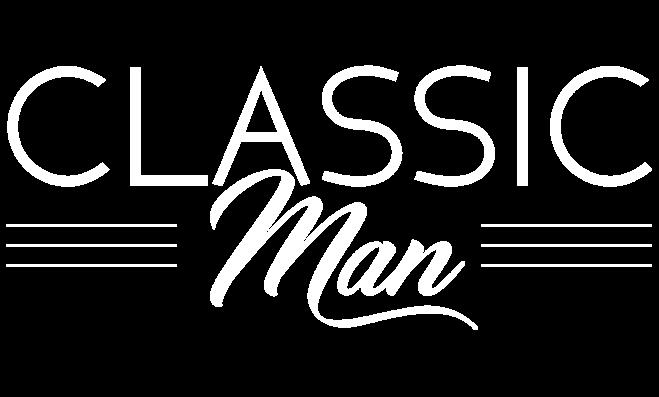
Written by Simone J. Smith


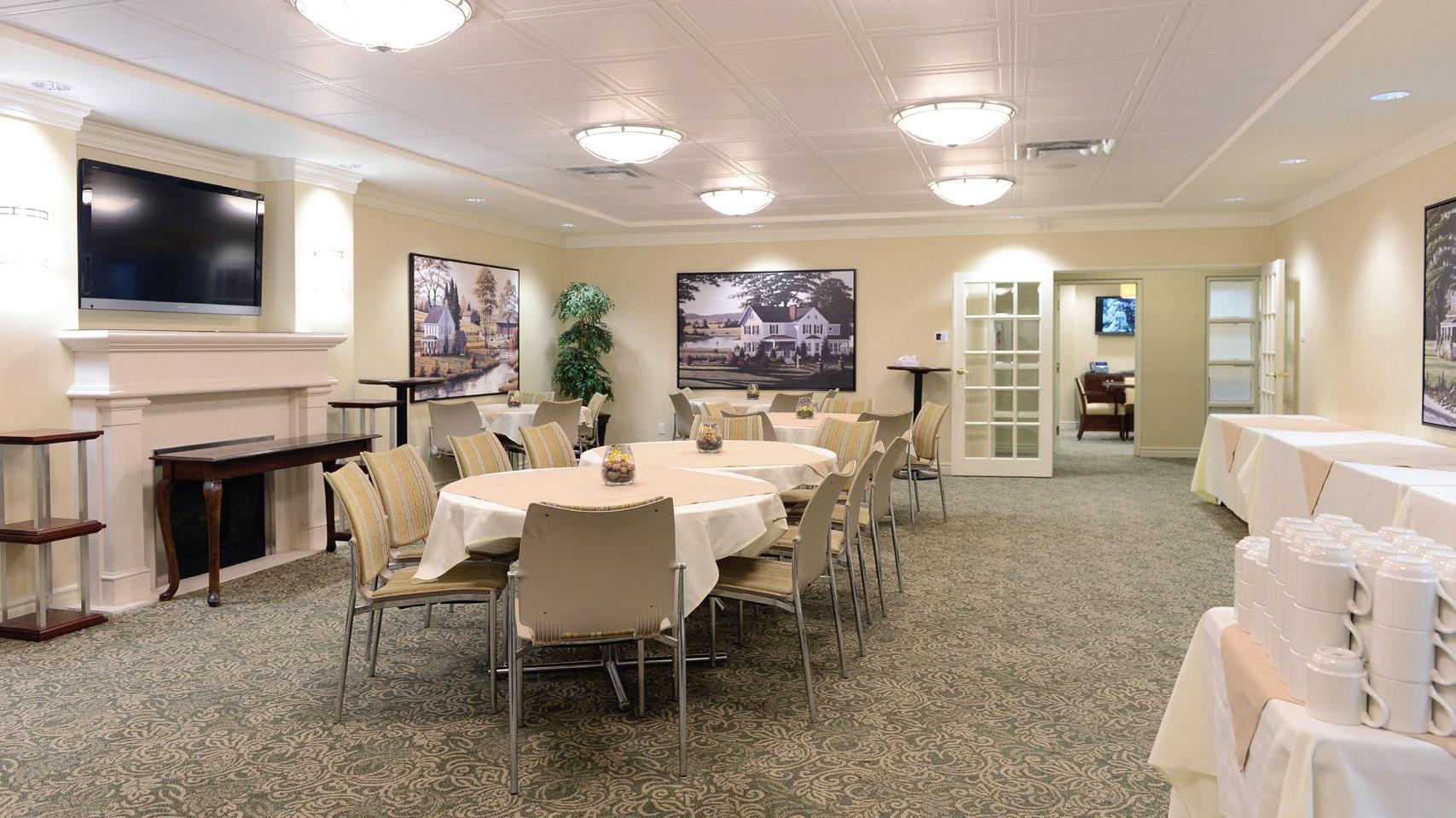









































































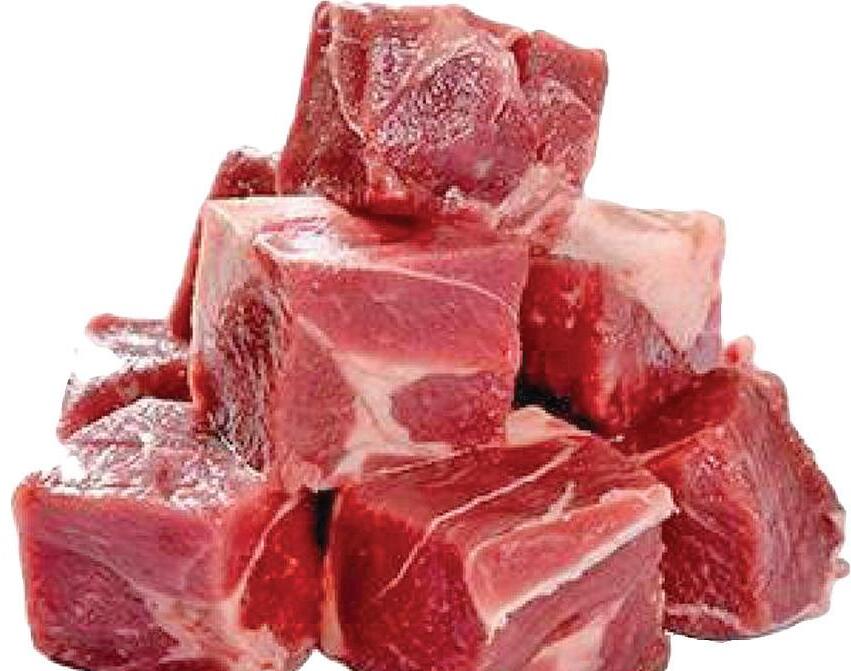































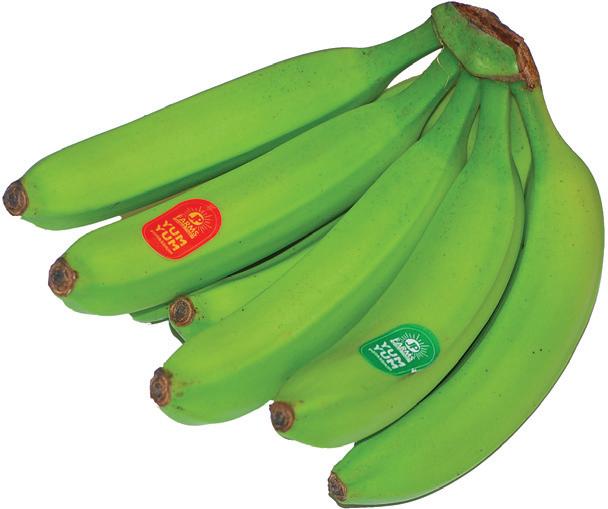














































































Some people begin retirement planning at 60 and still achieve financial freedom. Dr. Bridgmohan reveals how late starters can still win.
By Amy Bell, White Lightning Communications

Rising
uncertainty, and
lifespans have left people wondering if they will ever feel ready to stop working. Yet according to Dr. Natasha Bridgmohan, Founder of The Intelligent Consulting Group™ (ICG), it is never too late to build a stable, comfortable retirement.
“People come to us in their 60s thinking they’ve missed their chance,” says Dr. Bridgmohan. “They feel unprepared, but most already have the tools they need. What they lack is a plan that makes everything work together.”
Dr. Bridgmohan has spent over two decades helping
Canadians organize their finances and navigate complex life transitions. Through ICG, her team works with clients to prepare, structure, and align their financial picture before involving accountants, lawyers, or trustees.
“If you are between 60 and 70, there is still a lot you can do,” she explains. “We look at everything, your pensions, RRSPs, property, investments, and even debt, to see where the gaps are and where your money can work harder.”
Her approach combines education with strategy. The team focuses on reducing taxes, maximizing government benefits, and creating reliable income streams that last through

retirement. “The goal is to make sure your money outlives you,” says Dr. Bridgmohan.
Smart Strategies for a Stronger Retirement
For Canadians nearing retirement, several overlooked tools can make a big difference. “We show clients how to take advantage of every benefit available,” Dr. Bridgmohan explains. “That includes property tax relief, utility rebates, and federal credits through the CRA. We also help maximize Old Age Security (OAS) and the Guaranteed Income Supplement (GIS).”
Her team reviews existing savings accounts such as RIFs and LIFs to ensure they perform well and are set up for efficient withdrawals. They also focus on minimizing tax exposure and increasing dividend income. “A small adjustment can sometimes create thousands of dollars in annual savings,” she adds.
Dr. Bridgmohan also emphasizes the importance of estate preparation. “We make sure your will, power of attorney, and beneficiary designations are current,” she says. “People often overlook this part, yet it is one of the most powerful steps in avoiding unnecessary costs for your family.”
Generational wealth planning is another focus. “We help clients plan how to pass assets to children and grandchildren. It is about creating security and leaving a lasting impact.”
Guidance You Can Trust
Retirement planning often feels complicated because so many moving parts are involved. ICG simplifies the process by preparing a clear financial roadmap that brings every aspect of your planning into focus.
Another advantage with ICG is access to its network of in-house professionals in finance, real estate, law, and investments. This collaborative structure ensures that every part of your plan works together seamlessly. “Our team connects every step of the process,” says Dr. Bridgmohan. “When specialists collaborate under one roof, clients experience faster results, fewer delays, and greater peace of mind.”
“Our job is to prepare you for success,” she adds. “We bring clarity, strategy, and confidence to every retirement plan.” No one should enter retirement feeling uncertain.”
ICG is currently offering a free 30-minute retirement planning session to help Canadians assess their readiness for retirement and identify areas for improvement.
“It’s never too late to start planning,” says Dr. Bridgmohan. “You worked hard for your money. Now it’s time to make it work for you.”







Where Every Bite Feels Like the Islands!
Where Every Bite Feels Like the Islands!

Escape to the Caribbean right here in SCARBOROUGH! to the Caribbean right here SCARBOROUGH!





We don’t choose the starting line. The family and life circumstances into which we are born is happenstance. Reading “Straight Life: The Story of Art Pepper,” a book described as ‘sheer horror’ and the ‘saddest autobiography ever written’, I’m reminded of my more fortunate start. Pepper was a jazz musician, born to a runaway, 14-yearold mother: drunk, violent, and mostly absent. It gets worse, a lot worse. Pepper’s extraordinary musical talent might have lifted him out of bad trouble, but it was not to be.
It got me thinking about how the
people closest to us, in particular our mothers and our fathers, often set the stage for our lives. I am in the large club of people who believe they have the best parents in the world. My father, Ken Walker, wrote this column under the name W. Gifford-Jones, MD for 50 years, and readers will appreciate the good fortune my brothers and I feel, but what about our mother, a less wellknown figure?
When asked if she has any ‘wise words’ to share, she, in turn, reflects on her own parents.
“I was blessed to have landed on this planet with many advocates before me who used ‘wise words.’ I did not appreciate them at the time and sometimes balked at their strictures, but eventually I learned that what they offered me, sometimes wordlessly, always by example, would provide a benefit I ought not to ignore.”
“My father, a corporate executive, became known by colleagues for his ‘integrity’, a word meaning strong moral principles. As a girl, I watched his behaviour,
at home and in business. In time, I understood what that word meant, and I loved its strength and simplicity, as well as my father. I tried to emulate him.”
“Similarly, the word I would learn to apply to my mother was ‘rectitude’, correct behaviour, or thinking. I saw that it made for a happy marriage. It was not easy to measure up to her standard, but she was insistent.”
“Those two words, thankfully, set me off on the right path. And I soon learned another word that was unexpected at the time. I set off for university in 1951, long before Women’s Lib, but I landed at a women’s college which was established to offer women ‘self-sufficiency’. Its motto was Non Administrari Sed Administrare. I learned during those four years to be true to myself, and to establish independence of thought and behaviour, against all odds.”
“Then came along one Ken Walker. It was not long before he showed me the meaning of ‘compassion’. I watched him over many years exhibit absolute devotion
to each and every one of his patients, in his office practice and in surgery. I worried about his own health. When he suffered intense criticism by colleagues and society in general for his forward medical thinking, he taught me another word, ‘tolerance’. This one I found very difficult at times, but he remained astute, and I could not argue.”
“There are enough ‘wise words’ to go around. Like ‘truth’ and ‘virtue’ and more. The world would be a better place if we used any and all of these words. They are so simple but so hard to find today.”
“This is my contribution to ‘wise words’. May it end with the word ‘health’, which blesses me at 93, and I wish it to all.”
I can only say, “Thank you, Mom,” and “Thank you, Dad.” How tragic that some are born less lucky, but when encountering them, it’s an opportunity to reflect, and hopefully, an inspiration to be a better person and make the world a better place.
This column offers opinions on health and wellness, not personal medical advice.




There are dishes in Caribbean culture that don’t simply appear on a plate — they arrive with meaning. They bring stories, family memories, laughter, and sometimes even a tear or two. Jamaican curry goat is one of those dishes. For many, it represents celebration, togetherness, community, and a connection to something older than themselves. It’s a meal that takes time, demands patience, and rewards everyone who gathers around the pot. And while the ingredients are simple enough, the dish itself is layered with history, identity, and the pride of a people who have learned how to turn hardship into flavour and struggle into triumph.
Although many Caribbean islands prepare curry goat today, Jamaica has stamped its name on this dish in a way that no other place has. You can go anywhere in the world — Toronto, New York, London, Miami — and when someone says “curry goat,” the response is almost always, “Jamaican?” The answer is usually yes, because Jamaica has turned this humble dish into an icon.
Goat itself came to play a central role in Jamaican cooking long before curry entered the picture. In the island’s early post-Emancipation years, goat farming became a practical choice for families who did not have access to large plots of land. Goats were hardy, required minimal maintenance, and could survive in rugged terrain. Rural life in Jamaica revolved around resourcefulness, and goat meat — flavourful, sturdy, and perfect for slow cooking — naturally fit into that lifestyle.
Curry, however, arrived much later, brought to Jamaica by Indian indentured labourers in the 19th century. With them came spices, cooking techniques, and an entire culinary language that the Caribbean quickly embraced and began to reinterpret. Over generations, Jamaican cooks adapted Indian curry blends to suit their own environment and palate, creating a flavour that is distinctly Jamaican — brighter, earthier, and often built around turmeric, ginger, thyme, and the unmistakable warmth of pimento. Nowhere else in the world burns curry the way Jamaicans do, stirring it into hot oil to awaken the aroma and remove the rawness before the meat even touches the pan.
Eventually, goat and curry found one another, and the fusion became something uniquely Jamaican. What began as a rural preparation grew into a dish for holidays, weddings, funerals, christenings, and every major milestone a family might face. Curry goat became the meal that marked moments. It became the food you served to show love. It became the dish that invited memories to take a seat at the table.
Today, curry goat is one of the most recognizable Jamaican foods worldwide. In cities like Toronto, where Caribbean culture has become part of the social fabric, curry goat is not only a restaurant staple — it’s a community presence. People line up outside West Indian groceries
and halal butchers during Christmas and Easter because they know that somewhere, someone is planning to put on a “big pot.” The younger generation, once content just to show up with an appetite, is now learning the steps themselves: how to clean goat properly, how to season it so it absorbs everything overnight, how to burn the curry just enough, when to add the water, and how to leave the scotch bonnet pepper intact so the flavour comes through without burning down the entire household.
What makes curry goat truly meaningful, though, is not only where it came from, but what it still represents. For Jamaicans at home and abroad, curry goat is Sunday dinner. It is celebration. It is comfort. It is remembrance. It is the taste of weddings in the country, the aroma drifting out of community centres hosting family gatherings, and the familiar sight of someone leaning over the pot while everyone else asks, “Is it done yet?” In a single dish, you find the rhythm of Jamaican life — its resilience, its warmth, and its sense of togetherness.
And so, as we prepare to share this recipe, we’re not simply offering instructions. We’re passing along a tradition, one that has travelled across oceans and spans generations.
The Recipe: Authentic Jamaican Curry Goat
Serves: 6–8
Prep Time: At least 2 hours of marinating; overnight is ideal Cook Time: 2½ to 3 hours, depending on the tenderness of the goat
Ingredients
For seasoning and marinating:
• 3 to 4 lbs goat meat, preferably bonein
• 2 tablespoons Jamaican curry powder (Betapac, Blue Mountain, or other reputable blends)
• 1 tablespoon all-purpose seasoning or sea salt
• 1 teaspoon black pepper
• 1 medium onion, chopped
• 4–5 cloves garlic, crushed
• 3 sprigs fresh thyme
• 4 pimento (allspice) berries
• 1–2 inches fresh ginger, grated
• 1 whole Scotch bonnet pepper (left intact)
• 2 scallions, chopped
• 1 lime or lemon for cleaning the meat
For cooking:
• 2 tablespoons oil
• 2 additional tablespoons curry powder for burning
• 3 cups water or stock, added gradually
• 2 medium potatoes, diced (optional but traditional, especially for thickening)
Good curry goat always starts with properly cleaned meat. Goat has a stronger scent than many other meats, so Caribbean cooks traditionally wash it with lime, lemon, or vinegar to both clean and brighten the flavour. After rinsing the goat under cold water and rubbing it down with your acid of choice, rinse it again until the water runs clear. Once that’s done, the meat is ready to be seasoned.
Seasoning is where the foundation of flavour is built. Combine the goat with curry powder, salt or all-purpose seasoning, black pepper, garlic, onion, thyme, ginger, pimento, and scallion. Add the whole Scotch bonnet pepper on top. The pepper will release its heat gently while it cooks, giving the curry its signature aroma without overwhelming the dish. If you prefer a slightly hotter curry, you can pierce the pepper once before adding it — a Caribbean trick passed down through generations. Mix everything thoroughly so the curry powder coats each piece of goat, then cover and allow it to marinate for a minimum of two hours. Overnight is even better, giving the spices time to penetrate deep into the meat.
When it’s time to start cooking, heat the oil in a large, heavy pot. Jamaican curry goat begins with a technique known as “burning the curry,” which means adding curry powder directly to the hot oil and stirring it for a short time — usually about 20 to 30 seconds — until it darkens slightly and becomes fragrant. This step removes the raw edge that curry powder can sometimes have and gives the dish a deeper, richer flavour. It’s one of the details that sets Jamaican curry apart from any other style in the world.
Once the curry has bloomed, add the seasoned goat to the pot, stirring until every piece is covered in the burnt curry. Let the meat brown for about 10 to 15 minutes. During this stage, the goat begins to release its own juices, creating a base that will later turn into the gravy. After the initial browning, it’s time to add water or stock. This should be done gradually — just enough to cover the meat — and always with the understanding that goat needs time. You’re looking at about two to two and a half hours of slow cooking, sometimes longer depending on the cut of meat and how tough the goat is. Check the pot occasionally, add more water when needed, and allow the flavours to come together naturally.
Potatoes can be added during the final 30 to 40 minutes of cooking. Some families insist on them, others skip them entirely. In many Jamaican homes, potatoes aren’t just a filler — they thicken the gravy in a way that feels comforting and familiar. As the curry cooks down, the Scotch bonnet will have done its job, and you can remove it before serving if you prefer a milder dish.
What you’re left with at the end should be tender pieces of goat sitting in
a thick, rich, golden gravy that clings to the meat. The fragrance of the thyme, the earthiness of the curry, the depth of the pimento, and the gentle heat from the scotch bonnet come together to create a flavour that feels timeless — something that doesn’t just taste good but feels right.
While curry goat can be enjoyed in many ways, the classic pairing is rice and peas. The creamy coconut milk in the rice balances the bold spices of the curry in a way that has become almost universally accepted among Jamaicans. Some prefer it with plain white rice, which allows the curry to shine even more. Others enjoy it with fried dumplings or festival, especially when the goal is to sop up every last drop of gravy. In rural households, it’s not uncommon to see curry goat served with ground provisions — boiled yam, green banana, dasheen, or pumpkin — creating a plate that feels like a tribute to generations past.
And of course, in the Canadian and American diaspora, curry goat with roti has become its own beloved pairing. It may not be traditionally Jamaican, but it has certainly earned its place at Caribbean tables across North America.
A Dish With Roots and Reach
What keeps curry goat alive across generations isn’t just the taste — it’s the memory attached to it. People remember the weddings where curry goat was the first pot to finish. They remember Christmas dinners where the kitchen stayed warm all day long. They remember the auntie or uncle whose curry goat was legendary, the kind of recipe nobody could replicate exactly, no matter how hard they tried. Food like this isn’t just cooked — it’s inherited.
Even now, with Caribbean ingredients readily available in major cities and Caribbean restaurants becoming staples across Canada, there is something deeply grounding about making curry goat at home. The slow simmering, the aroma filling every corner of the kitchen, the moment the meat finally yields to the fork — these things carry meaning. They remind us that no matter how far we are from home, the flavours we grew up with still know how to find us.
Wherever Jamaicans have built a life — whether in Scarborough, Brampton, Edmonton, Fort Lauderdale, Brixton, Brooklyn, or back in the hills of Manchester or St. Ann — curry goat remains a symbol of identity. It connects people to their roots, their memories, and their culture. It tells the story of a proud people who have always known how to turn simple ingredients into something extraordinary.
And like all great Caribbean dishes, curry goat isn’t just food. It’s history, heart, and home — all in one pot.

sydnee@carib101.com
VARIETY CORNER
The cast of Love Island USA season seven is back in the headlines again thanks to a livestream.
On October 27th, 2025, Love Island USA season seven islander Huda Mustafa and boyfriend Louis Russell, who appeared on Too Hot to Handle seasons 5 and 6, and Perfect Match season 3, were on Russell’s livestream when a fan, who is assumed to be a child, called in and called fellow islander Olandria Carthen a racial slur.
The pair quickly ended the call and burst into laughter before Mustafa asked about what the caller said, and Russell said the caller said “a bad word.”
The clip from that livestream went viral, prompting both Mustafa and Russell to is-
sue separate apologies on their accounts after receiving backlash.
Mustafa’s first statement did not sit well with many, as she was contradicting herself when she explained that she and Russell laughed out of nervousness and, in the same sentence, said it was difficult to hear what was being said, because of the caller’s child-like voice. However, not only I, but others who saw the clip were clearly able to understand what was said, even though it sounded like it came from a child. This led to Mustafa issuing a second apology, acknowledging that she and Russell reacted inappropriately, offering a direct apology to Carthen and saying she would donate to the NAACP.
“I want to begin by saying I completely respect Olandria, and it’s extremely disheartening that anyone, especially a presumed child, would find it excusable to use this type of language, and doing so only underlines the ignorance of the gravity that such a word carries. Olandria; it is now clear that this comment was targeted at you, and I apologize for my immediate reaction,” said Mustafa in her second statement.
Russell, who is mixed-race, had the following to say in part of his statement: “As a
BY GEORGE SHEPPARD
In the days since Hurricane Melissa swept across Jamaica, the island has been reckoning with both the force of nature and the force of human resilience. Melissa carved a path that was as unpredictable as it was unforgiving, uprooting livelihoods, straining vital infrastructure, and shaking communities already stretched by economic pressures. Yet during destruction, something else has been revealed; an unmistakable current of hope, carried forward by the people of Jamaica and strengthened by compassion from far beyond its shores.
Hope, in this moment, is not abstract. It is visible in neighbours clearing roads before official crews can reach them. It is found in families who lost nearly everything, but still prepare a meal to share with others. It emerges in the determined resolve of utility workers patching power lines in driving rain, and in the steady hands of volunteers sorting supplies long after midnight. For all the havoc Melissa unleashed, it could not erode the deep instinct Jamaicans have to depend on one another when it matters most.
I grew up on an island in the North Atlantic. Its rugged shores and weather-beaten people stood the testament of time. Our very existence depended on the weather; weather that was beyond our control but raged havoc on our physical and emotional well-being. My father was a lifelong fisherman. He went to sea for ten-day trips, at the peril of the winds and lofty waves. He has an awe for the sea; he would say, “Don’t try to beat the sea; it’s always in charge.” This was never more apparent than a winter storm which brought 200 km/h winds, while my father and 14 other men rode out minute by minute on wave after merciless wave. At home, we knew nothing of their well-being. As the storm passed, we waited. He maintains, still, that you never “beat” Mother Nature, rather, prepare for the worse, hope for the best, as be on good terms with those around you.
Across Jamaica, stories continue to surface, stories of community centres transformed into shelters run jointly by church leaders and youth groups; stories of fishermen guiding rescue teams through flooded lanes; stories of small shop owners offering food and water even as their own stock dwindled. These moments are reminders that rebuilding begins not with blueprints or budgets, but with human beings choosing solidarity over despair.
Just as vital has been the compassion flowing in from abroad. Long before dawn broke after the storm, aid organizations from the Caribbean region, North America,
Black man, I have a greater empathy through my own lived experiences battling racism and the idea that a flustered response to a very unnerving situation could be misinterpreted for me not taking the matter seriously is incredibly disheartening,” said Russell.
Their apologies were not accepted by many who saw through them, with people sharing how the pair wouldn’t have laughed if that same slur was directed towards Russell, or Mustafa’s 5-year-old daughter, who is also mixed-race.
Brands that have partnered with Mustafa did not find the pair’s reaction to the slur funny and were not swayed by the apologies.
Gymshark was the first to come out and state that while they had partnered with Mustafa in the past, she was never a brand ambassador for the athletic apparel retailer and announced they will not collaborate with her in the future.
On October 31st, 2025, Huda Beauty founder Huda Kattan announced that the makeup brand had ended their partnership with Mustafa in a two-page statement on their Instagram page.
they don’t want to be affiliated with anything that can affect their reputation.
This situation also serves as a reminder of what can happen when people don’t check people within their circle when they do things that can reflect poorly on them. Not all, but a handful of Mustafa’s followers have displayed racism not only towards Carthen, but also towards fellow season seven islander Chelley Bissanthe, before this incident. At the season seven reunion, both Carthen and Bissanthe expressed they were deeply hurt over Mustafa not sticking up for them, with Mustafa claiming she was “too busy” to do so.
While the caller should be held accountable for their choice of words, Mustafa and Russell should also be held accountable for their reaction. While there’s nothing new about people laughing out of nervousness, there’s nothing funny about calling someone a racial slur. So, laughing at a racial slur being used is not appropriate.
and Europe announced deployment. Diaspora communities rallied instantly, launching fundraisers and coordinating shipments of tarps, generators, medical kits, and water filtration units. Governments pledged support, but just as significant were the gestures from individuals who have never set foot in Jamaica yet felt compelled to help.
This solidarity matters. It reinforces a truth that disasters often illuminate-while an island may be geographically small, its network of connection is vast. Jamaica has long shared its culture, music, athletic brilliance, and hospitality with the world. Now, the world has responded in kind: with generosity, with empathy, and with a recognition that recovery is not a local concern but a collective responsibility.
The road ahead will not be simple. Rebuilding will require careful planning, substantial investment, and the willingness to address vulnerabilities that Melissa exposed, from coastal erosion to ageing infrastructure. It is essential to remember that progress is not only measured in reconstructed bridges, or reopened businesses. It is measured in the strengthening of trust between communities and institutions, and in the belief that tomorrow can be steadier than yesterday.
As assessments continue and longterm plans emerge, leaders, both local and international, must ensure that the recovery process is equitable. Rural communities hit hardest must not be left at the margins. Small farmers whose fields were flooded must be supported as vigorously as urban enterprises, for it is the farmers and fisherpersons who put food on our tables. Children whose schooling has been disrupted must receive resources that allow them not only to return to class but to thrive. Moments like this test a society’s commitment to fairness, and Jamaica has an opportunity to lead by example.
There is, within this difficult chapter, the possibility of renewal. Melissa’s winds revealed weaknesses, but they also revealed strengths: a population that refuses to be defined by adversity, a diaspora that remains unwavering in its loyalty, and a global network of partners ready to stand alongside the island. Hope is already germinating in the way people speak to one another, in the way communities plan together, and in the way, strangers have chosen to care.
What comes next for Jamaica is the shaping of a future built on shared purpose. If the compassion shown in these early days is any indication, that future can be brighter, more unified, and more resilient than ever.
“We know that many members of our community and team were hurt and offended by these actions. While we valued the partnership we had with Huda, her recent behaviour and the way the situation was handled does not reflect our brand’s principles. As a result, we have decided to end our partnership and remove any related content from our social platforms and in-store displays,” said in part of Huda Beauty’s statement.
In this day and age, people need to understand that racism won’t be tolerated and there are consequences for those who take part in it, especially when you’re in the public eye. Brands have a reputation to protect, and
Despite this, Carthen handled the situation gracefully and encouraged her followers to donate to organizations such as the NAACP, UNCF, the Thurgood Marshall College Fund and any other organization dedicated to educating and uplifting the Black community in a statement on her Instagram page.
In parts of her statement, Carthen said the following: “That kind of language is never acceptable,” she wrote. “Not in anger, not as a joke, not ever. Words like that carry generations of pain, and pretending otherwise only keeps the cycle going. Defending it, laughing about it, or making excuses is even worse,” said Carthen
Other season seven islanders, including Carthen’s partner, Nic Vansteenberghe, have also condemned Mustafa and Russell’s reaction, all the while praising Carthen for how she handled herself in the situation.


simone@carib101.com
SPECIALIST
The ping arrived at 3:07 a.m. Another aerial video of roofless homes in Jamaica, captioned “Pray for us.” I watched it once, twice, then auto played into a montage of flooded streets, wailing grandmothers, and a single pink sneaker caught on a barbed-wire fence. By sunrise I had shared, donated, text-checked on cousins, and still felt… nothing.
My coffee tasted like copper. My thumbs kept scrolling. Somewhere between the fifth fundraiser link and a tweet blaming the government, I realized the disaster hadn’t happened only on the island; it was unfolding inside my chest.
Compassion fatigue is the emotional concussion nobody diagnoses. It is the sudden snap when the heart, over-pressurized by secondary trauma, seals itself shut. In North America we are
BY HERBERT HILDEBRANDT POLITICAL PARLEY
The latest federal budget from Mark Carney’s government bares a simple truth: Canada is barreling toward a fiscal abyss, and the mainstream media is cheering it on. A deficit of $78.3 billion is being celebrated as big-government boldness to counter the perceived threat of Trumpian economic policies. Interest payments alone this year ring in at $55.6 billion and climb to an estimated $76.1 billion by 202930. Why is hardly anyone calling this what it is: a reckless surrender of future generations’ prosperity?
The mainstream narratives insist Canadians should “embrace” government spending as an investment, as though it were a form of national virtue rather than a liability. We are told that swelling program after program is simply the cost of being a modern society and will help preserve democracy and fight the horrific threat of climate change, whatever that means at the moment. The harsh truth is this: we’re mortgaging our children’s lives so we can spend recklessly today. If households behaved this way, adding tens of thousands
marooned on couches, mainlining crises through 6-inch screens, mistaking proximity for preparedness. The brain cannot tell the difference between a hurricane 1,500 miles away and one blowing through the living room; cortisol floods either way.
Last week I spoke with a Jamaican-Canadian psychologist who studies “digital diaspora trauma.” She told me her Toronto waiting list tripled after Hurricane Beryl clips went viral. “Clients arrive convinced they’re broken,” she said, “But they are actually over-connected: no ritual, no rhythm, no release.” She keeps a box of river stones in her office; patients select one, name the headline that numbed them, and hurl it into a bowl of water. The splash is the first felt sound some bodies register in weeks.
I tried it. I named the pink sneaker. The stone sank; my shoulders rose.
Empathy has two chambers: affective (I feel with you) and cognitive (I see you). Algorithms pump the first chamber until it ruptures, while starving the second. The cure is a disciplined perspective. Baldwin once wrote, “You think your pain and your heartbreak are unprecedented in the history of the world, but then you read.”
The “Shirt Off My Back” drive began when I received a phone call from my mom letting me know that our family in Westmoreland had lost everything. I could tell she was upset; the weight of responsibility was on us because we were “in foreign.” “How are we going to help everyone,” she asked? At that moment, I had nothing. I sat there for a bit unsure how to process my mother’s pain, and the pain of the family that I could not directly feel.
I picked up the phone and gave my mentor Roger Mooking a ring; as we were talking, he noticed that I didn’t sound like myself and called it out. I told him what my mom had said, and he said right away, “I have some items I can donate. Let me call my neighbours and see if anyone has anything to donate.”
Within 24 hours, we had a truck full of clothes, a warehouse space donated to us by Mr. Guy Steer from Steer2Home, and a group of community partners ready to get in where they fit in. Just like that, cognitive empathy was restored, affective empathy protected.
I learned that the best way to deal with compassion fatigue is to take action. Instead of just scrolling through feeds and sharing posts (which I still do from time to
in new debt per year and paying thousands in interest per year just to manage that debt, it would not be called boldness, it would be called financial ruin. Maybe it is time for a Dave Ramsey for Canadian Finance Minister campaign?
The true elephant in the room remains unaddressed: overspending on bloated bureaucratic social programs. The government’s own financial tables show public-debt charges climbing not because of some external shock, but because the debt stock keeps growing. Gross borrowings this year are $614 billion, 75% of it just refinancing what we already owe. The apparatus of government is expanding, the liabilities are expanding, but the scrutiny is shrinking as the media continue to frame every new entitlement as “progress,” every lavish program as “investment.”
Unsurprisingly, this spiralling spending creates dependency. The rhetoric around universal basic income is moving from fringe to framework. Legislators in Ottawa and the Senate are actively exploring it, the Parliamentary Budget Officer has run the numbers, and bureaucratic appetite is being whetted. What happens when trillions more are committed to entitlements
that must now be serviced with deferred tax burdens? The answer: a generation enslaved by a government-administered life of hand-out stability with no escape hatch.
In just one generation we are witnessing the destruction of affordability for future Canadians. As interest costs climb from $55.6 billion today to $82 billion-plus by the early 2030s under plausible scenarios, every new dollar spent on programs means one less dollar for tax cuts, infrastructure, or paying down the debt. Households mean business when it comes to budgets, they don’t tolerate open-ended borrowing without discipline. Why should Ottawa be any different?
Here’s a difficult truth: no major political party is willing to confront the roots of the crisis. They will argue over levels of spending, but not whether the spending is sustainable. Largely, the political class is avoiding the key question: when the liabilities exceed the ability to pay systemically, what gives? We need more than tweaks. We need a populist, peaceful revolution of financial realism.
We should demand from our leaders a hard fiscal rule: program spending must grow no faster than population plus
time), I found peace in developing a sustainable plan to help my family, and their communities restore a level of normality. I also utilize my psychological toolkit to help me deal with the constant dread feeds that are being amplified. I thought I would share some of these tips with you:
1. Curate your feed: Mute hashtags that update every thirty seconds; follow two local voices you can name in the dark.
2. Schedule the grief: Set a 15-minute “headline window” after lunch; outside that, the phone sleeps in another room.
3. Move the story through the body: Ten squats for every reshared post; the quadriceps remembers what the heart can’t yet hold.
Last night the same cousin who sent the pink-sneaker clip forwarded a 12-second video of a little girl twirling in a new yellow dress. I felt the old tug behind the ribs, inside the throat, the place where compassion lives when it is rested. I didn’t cry. I exhaled, long and slow, like someone who had almost forgotten the texture of her own breath...
inflation. We must insist on an interest-cap clause with a hard freeze on deficit spending for the next decade. We must call for real audit-and-sunset provisions for the largest social programmes. These are measurable, enforceable and non-ideological. They anchor responsibility and signal a shift from dependency to autonomy.
Further, the media must stop normalizing grotesque fiscal expansion as patriotic sacrifice. They must frame budget deficits as moral failures, not heroic investments. Canadians deserve to know that when government borrowing becomes a way of life, the bills get passed to generations who didn’t vote for them and will still pay decades later.
The future of Canadian freedom is not in more dependency, more programs, more borrowing. It’s in disciplined budgets, empowered individuals, and the restoration of affordability. If we don’t redefine our national narrative soon, we will soon have a legacy of bondage marketed as universal basic income, enslaving the next generation into perpetual poverty with no prospect of success beyond survival.

prepare for,

DANIEL COLE
daniel@carib101.com
Opportunities rarely announce themselves. They often arrive unpolished, disguised as challenges, or concealed within ordinary routines. Yet, the difference between those who advance and those who remain stagnant lies not in luck, but in perception, the cultivated ability to recognize, prepare for, and seize the subtle openings life continu-
Contrary to the old saying that “An opportunity once lost can never be regained,” the truth is more dynamic: opportunities are cyclical. They reappear in new forms, waiting for those with discernment and readiness to act. Life constantly recycles chances, but never in the same shape.
Abraham Lincoln once remarked, “I will study and prepare myself, and someday my chance will come.” This timeless wisdom underscores a fundamental law of success: readiness precedes recognition. Many people fail to seize opportunities not because they are absent, but because they are unprepared to perceive or utilize them.
Whitney Young echoed this truth: “It is better to be prepared for an opportunity and not have one than to have an opportunity and not be prepared.” Prepa-
ration creates magnetic readiness; it draws chances toward you rather than forcing you to chase after them.
One of the most overlooked truths about opportunity is its location. It often hides within three terrains: problems, people, and persistence.
Problems as gateways
Every societal problem carries within it the seed of enterprise. Doctors thrive because illness exists; educators find purpose in ignorance; engineers innovate where inefficiencies persist. The world’s great entrepreneurs, from Elon Musk to Wangari Maathai, found their breakthroughs in addressing persistent human challenges. To reject problems is to reject potential.
Thus, the question shifts from “Why do such problems exist?” to “What opportunity is hidden within this?”
People as pathways
When life gives you the privilege of proximity to people of value: mentors, leaders, or those more experienced than you, recognize that you are standing at the threshold of opportunity. Service, humility, and diligence in such environments can open doors far beyond personal capability.
As research in social capital shows, access to meaningful networks often determines upward mobility more than raw talent. People rise not only by merit, but by association. By the quality of relationships nurtured with integrity and contribution. Persistence as proof
Not all opportunities arrive fully formed. Many begin as small, ambiguous
tasks that only later reveal their significance. Persistence transforms a simple assignment into a defining moment. Those who endure uncertainty often find themselves standing where “luck” seems to strike, though it was never luck, but consistent labour meeting divine timing.
In addition, it may seem paradoxical, but opportunities often flow toward the generous. Giving, whether material, intellectual, or emotional, is not merely an act of kindness; it is a strategy of connection. As Proverbs 18:16 notes, “A gift opens the way and ushers the giver into the presence of the great.”
Modern behavioral economics supports this: generosity fosters reciprocity and trust, both critical in social and business ecosystems. Gifts, time, and goodwill are relational investments.
In a rapidly evolving world, adaptability is the new intelligence. Learning new skills (languages, technologies, cultural competencies) broadens the field of potential opportunities. You may not see the immediate payoff, but readiness compounds over time. What seems trivial today may become essential tomorrow.
Harvard research on lifelong learning confirms that consistent upskilling cognitive longevity. Every skill acquired becomes a new lens for spotting value in unexpected places.
Opportunities favour those who are disciplined enough to prepare, perceptive enough to recognize, and courageous enough to act. The world does not reward the anxious seeker of opportunities; it rewards the ready soul.
BY LISA THOMPSON
LEGAL LISA
In the heart of Toronto, where the city’s jagged skyline casts long shadows over whispering GO trains, a new generation of Black women stands at the threshold of possibility and hardship. Among them is Jasmine, a figure whose story threads through the daily pulse of the city, emblematic of the shifting realities, dreams, and challenges facing Black women in the diaspora.
Jasmine, a recent university graduate, personifies the modern independent woman: single, Black, and unwavering in her determination. Her mornings begin before the sun rise above Lake Ontario’s shimmering horizon, in a modest one-bedroom apartment that she shares with another young professional. The city’s traffic and train lines sing their metallic tunes beneath her window, a daily reminder that life in Toronto is always moving, sometimes too fast to catch.
Balancing two part-time jobs and a side hustle unrelated to her studies, Jasmine’s professional life is an endless juggling act. She moves through the city streets with confidence that shines as brightly as the polished black 2011 Ford Mustang she worked countless hours to afford and detail herself. That Mustang, bought with the hard-earned cash she saved through university, is a testament to her grit and her refusal to let circumstance define her trajectory.
Yet, even as Jasmine ascends the ranks of self-reliance, the climb is steep. The cost of living in Toronto is a high hurdle for anyone, but for Black women navigating a world of systemic bias and subtle barriers, it
is often doubled. Jasmine’s evenings, when work releases its grip, are spent tending to herself: cooking simple meals, scrolling through social media for laughter and connection, and sometimes confronting the silence that settles over her apartment after the city’s energy recedes.
Dating, for Jasmine, is more concept than reality. With little time and even less desire to settle for fleeting or unfulfilling romantic encounters, relationships are relegated to sporadic exchanges on social media, or the occasional meetup with friends. Her mother, who raised Jasmine and her siblings alone, calls every week with hopes of grandchildren and family gatherings, her voice carrying both longing and pride. Jasmine listens, reassures her mother that her career and independence come first, and quietly battles the feeling that she is no closer to her envisioned future than when she first walked across her university stage.
Jasmine’s reality, however, is far from unique. Many women in Toronto’s Black diaspora are, like her, forging paths without the steadying presence of fathers, or father figures. When household emergencies arise: leaky pipe, a flat tire, or a blown gasket on the highway, Jasmine turns not to a partner, or parent, but to her own ingenuity, honed through YouTube tutorials, Instagram hacks, and the occasional AI-guided repair video. This resourcefulness is both a badge of honour and a stark reflection of the limited support networks available to so many Black women.
Despite these obstacles, Jasmine’s story is interwoven with moments of profound triumph. Each time she fixes something in her apartment, lands a new free -
lance client, or receives a small promotion at work, she adds another thread of pride to her tapestry of achievement. These victories, some public, others known only to herself, stand as daily reminders that her journey is powered by a tenacious pursuit of growth and self-fulfillment.
Still, the burdens Jasmine carries are real and persistent. The specter of legal trouble—perhaps a dispute over a lease, an unpaid parking ticket that snowballs into a court date, or confusion over employment contracts meets her financial worries more often than any romantic partner does. Bills regularly outpace her income, and the pressure to help family back home, or support younger siblings is ever-present. Such challenges are not unique to her, but they are magnified by the intersecting realities of race, gender, and economic instability in a city that promises much, but does not always deliver equally to all.
Yet through it all, Jasmine presses forward. Her self-belief is a quiet anthem, one that reverberates through the city’s streets, subways, and high-rises, a hymn of survival, hope, and the radical potential to carve one’s own destiny. She is, in every sense, a product of her circumstances and a testament to transcending them.
As Maya Angelou so powerfully said, “I can be changed by what happens to me. But I refuse to be reduced by it.” Jasmine’s story echoes this wisdom, offering Toronto a portrait of what it means to persist, to thrive, and to rise above.
Name changed to protect privacy. Some of my clients have interesting backgrounds and a lot to share with others.



the jaws of government control
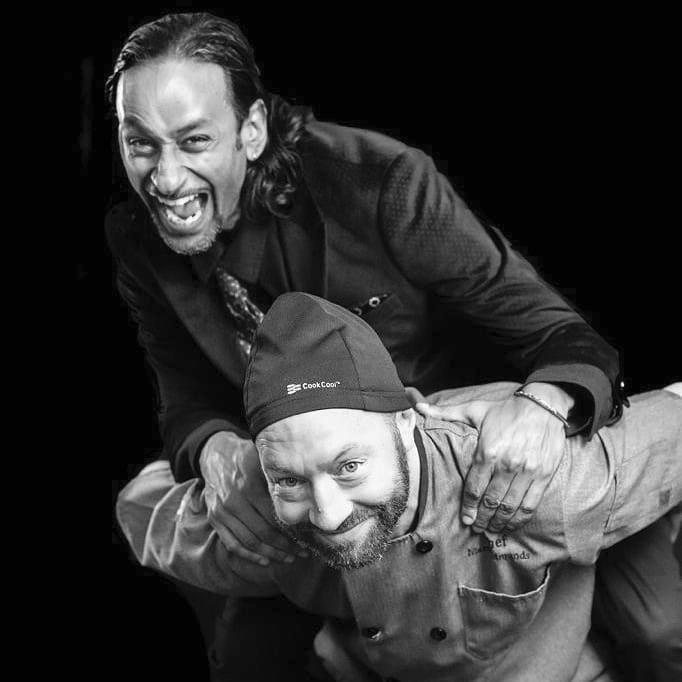
an industry that remains fundamentally crippled by the very regulations it pretends to transcend. This contradiction defines the night.
The scene is a glittering monument to the success found within a tiny, frustrating sliver of permission. The mostly white male executives, sharp in their bespoke suits, cheer for categories like “Marketing Campaign of the Year” or “Best Packaging Design” or even the appropriated “Rookie of the Year.” They do this all while knowing their operations exist under Health Canada’s suffocating thumb. Their triumphs are not rooted in genuine entrepreneurial freedom. Instead, they represent expensive victories snatched from the jaws of government control.
Companies celebrate marketing innovation while simultaneously navigating restrictive packaging rules that mandate muted colors, limit the size of logos, and reduce essential consumer information to microscopic text. They toast high potency success while facing strict limitations on cannabinoid content in products like edibles and beverages, rules explicitly designed to choke creativity and limit consumer appeal. The loudest applause is reserved for the few companies who managed to successfully navigate an obstacle course built to prevent genuine scale and profitability. This entire, lavish celebration, stripped of its champagne and corporate jargon, is nothing more than a high-priced exercise in celebrating regulatory compliance.
The fundamental truth is that the awards do not honour genius; they validate survival. Winning an Adcann trophy confirms that a company possessed the enormous capital necessary to withstand the intense legal and financial pressures that
crushed countless smaller competitors. Canada’s initial legalization framework demanded large-scale facilities, complex security clearances, and extensive regulatory adherence, requirements that effectively locked out low-budget start-ups.
A small, craft cultivator focusing purely on the plant’s quality is not merely outspent; they are structurally excluded from the outset. They cannot afford the steep entry fees, the sophisticated marketing infrastructure, or the sustained lobbying required to catch a judge’s eye. This system is designed, perhaps inadvertently, to function as a final, exclusive coronation for the corporate ecosystem. It proves that money is the only true measure of excellence in this heavily restricted Canadian market, replacing horticultural mastery and creative innovation with balance sheet strength.
This annual gathering, with its relentless social media churn and polished presentation, ultimately functions as a sophisticated, necessary marketing veneer. The event generates high-gloss, shareable content that large Licensed Producers (LPs) wield as a temporary shield against the brutal realities of the Canadian cannabis market.
The reality beyond the ballroom is grim: the sector is currently drowning in a flood of oversupply, wholesale prices are plummeting across the country, and achieving sustainable profitability remains a distant, painful horizon for many firms. The Adcann gala is meticulously designed to project an image of a thriving, innovative sector, a confident front presented to both investors and wary consumers. In truth, the event mostly serves to confirm that only enormous capital investment is enough to keep a company’s head above the economic tide. This validation of financial endurance is what truly matters on this night.
The spotlight shines brightest on those who possessed the deepest pockets, not those who dedicated years to cultivating the finest harvest or engaging with customers in a unique way. The awards become a self-serving ritual, a declaration that even if the flower itself isn’t perfect, the ability to finance a multi-million-dollar operational and marketing structure is the actual prize.
The celebration, bathed in its own regulatory irony, proves that in this heavily restricted Canadian arena, the size of the bankroll dictates who gets to stand on the podium, regardless of the quality of the product in the package. The awards unnecessarily celebrate the power of a capital-intensive ecosystem that flourished in the tightly controlled vacuum created by government policy.

$449,000


brijpaul@carib101.com
Recently, a young couple sat across from me, both looking frustrated.
They had been renting a small condo in Mississauga for nearly five years, and although they had good jobs and a decent income, the dream of owning their own home still felt just out of reach.
to $1.5 million)
• 20% for homes valued over $1.5 million
If your down payment is less than 20%, you’ll need mortgage loan insurance, an extra cost that protects the lender, not you. That’s why many buyers aim to save enough to reach the 20% threshold.
Here are four innovative ways to save for your down payment:
ulations. Starting December 15th, 2024, first-time buyers with insured mortgages can choose a 30-year amortization, which reduces their monthly payments. If you are buying in Ontario, you might also qualify for up to $4,000 back through the Land Transfer Tax Rebate, along with a $1,500 First-Time Home Buyers’ Tax Credit to help cover closing costs.
it open houses, research neighbourhoods, and continue learning.
The couple I mentioned earlier decided to take action. They opened an FHSA, automated their savings, and created a plan to pay off their car loan within six months.
The market remains unpredictable. Prices could fall further, or they might stabilize and rise again. No one knows for certain. What’s clear is this: being prepared gives you control.
Take small, steady steps. Learn the system. Use the tools available to you, and most importantly, believe it’s possible, because it is. Your dream home isn’t out of reach. You’re simply preparing to claim it. JAY
Their story is one I hear often these days. Across Canada, home prices are falling, and mortgage rates (both fixed and variable) are beginning to ease. The market has cooled, giving buyers more negotiating power. Still, many first-time buyers are staying on the sidelines, uncertain if now is the right time to buy.
In my book, “The Road to Homeownership: A Canadian Blueprint,” I emphasize the importance of preparation. Homeownership isn’t just a financial milestone; it’s a mindset shift. It requires discipline, patience, and a strategic approach.
If you’re currently renting, this could be a good opportunity to establish a solid financial footing and save for your down payment. Think of it as practice before the big game. In Canada, the minimum down payment varies depending on the price of your home.
• 5% for homes valued up to $500,000
• 10% on the amount over $500,000 (up
1. Open a First Home Savings Account (FHSA). The FHSA is one of the top tools available to Canadians today. You can contribute up to $8,000 annually, with tax deductions similar to an RRSP and tax-free withdrawals like a TFSA. Over time, it can grow into a significant part of your down payment.
2. Tap into your RRSP with the Home Buyers’ Plan (HBP). If you’ve been contributing to an RRSP, you can withdraw up to $60,000 (or $120,000 for couples) tax-free for your first home, as long as you repay it over 15 years.
3. Automate Your Savings. Arrange an automatic transfer to move money into a separate “home fund” with each payday. Treat it as a bill you pay yourself. Over time, it becomes natural, and your savings grow quietly in the background.
4. Redirect Windfalls and Extras. A tax refund, bonus, or even a side gig can be directly added to your future home savings. It’s much easier to save from unexpected gains than to cut from your regular budget.
The government has also eased some reg-

Use this time to reduce debt, improve your credit, and grow your savings. Get preapproved for a mortgage so you know what you can comfortably afford. Vis-
Owning a home might seem far off, but it’s nearer than you believe, especially if you see this waiting time as part of your journey, not a setback.
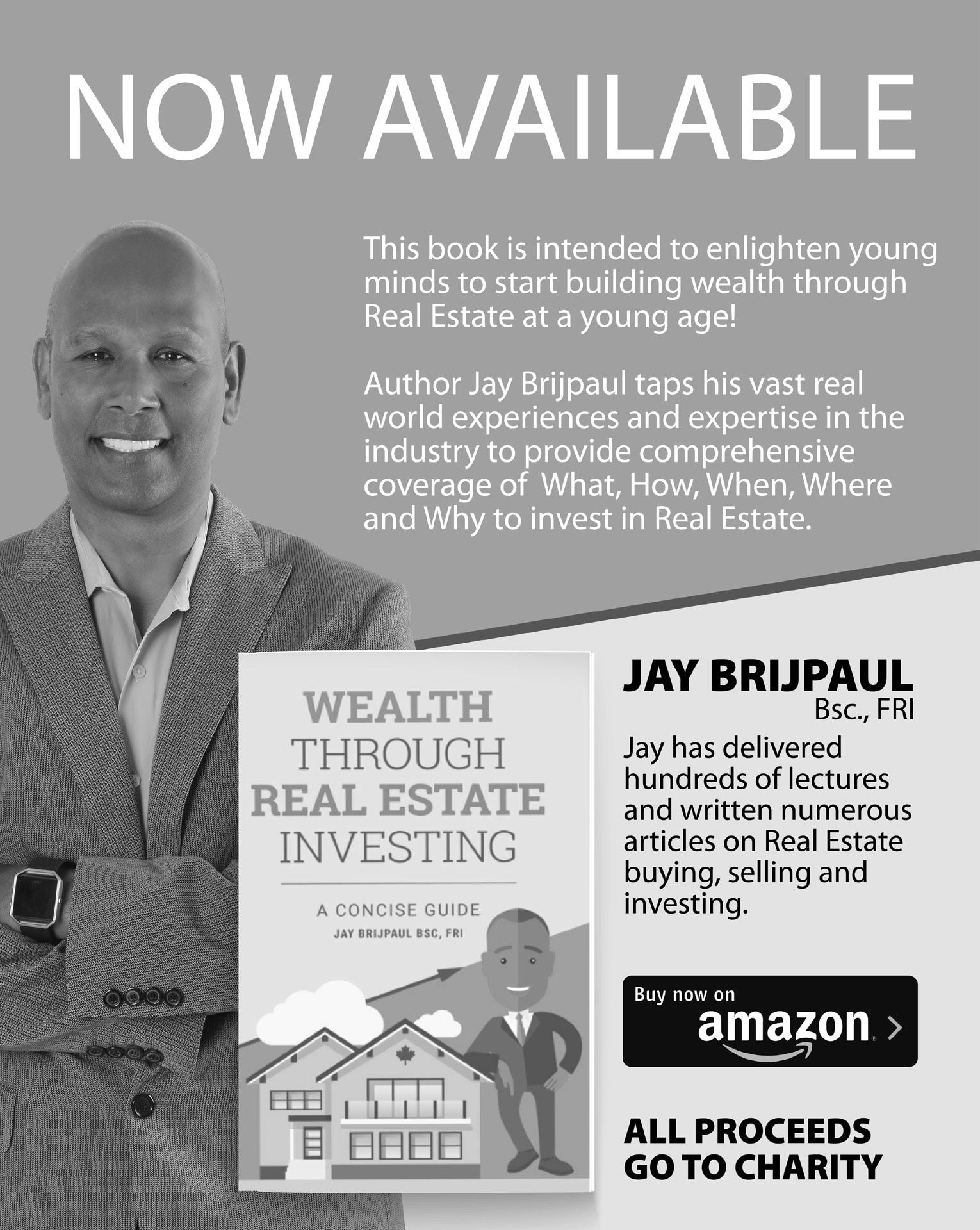

for the week of November 16 – November 22, 2025
THE LUCKIEST SIGNS THIS WEEK: SAGITTARIUS, GEMINI, AND TAURUS
ARIES: Tie up unfinished business this week. A small midweek win reminds you progress is finally picking up again.
TAURUS: An unexpected opportunity feels uncomfortable at first, but give it another look — it could lead to long-term stability.
GEMINI: Reconnect with someone you’ve been meaning to message. A simple conversation shifts your plans in a positive way.
CANCER: Trust your instincts. Home and money decisions become clearer toward the weekend, easing some lingering emotional stress.
LEO: Your confidence quietly returns. Move forward steadily with your plans — slow, deliberate progress works better this week.
VIRGO: Let someone else take the lead for once. Stepping back brings clarity and helps you reset your perspective.
LIBRA: Protect your peace. An honest talk strengthens a partnership and brings more balance into your week.
SCORPIO: Momentum returns on something you thought was stalled. Focus on your real goals — finances improve slowly but surely.
SAGITTARIUS: Your energy rises and people gravitate toward you. Expect good news or a useful opportunity before the weekend.
CAPRICORN: You’re pushed to slow down and regroup. Resting helps you see a smarter path for work and future plans.
AQUARIUS: Fresh ideas flow easily. A supportive conversation helps you reconnect with a passion you’ve put aside for too long.
PISCES: You’re extra intuitive this week. A decision that’s been troubling you becomes easier once you get quiet time.
Fill in the grid so that every row, every column, and every 3x3 box contains the numbers 1 through 9 only once.
Each 3x3 box is outlined with a darker line. You already have a few numbers to get you started. Remember: You must not repeat the numbers 1 through 9 in the same line, column, or 3x3 box.















